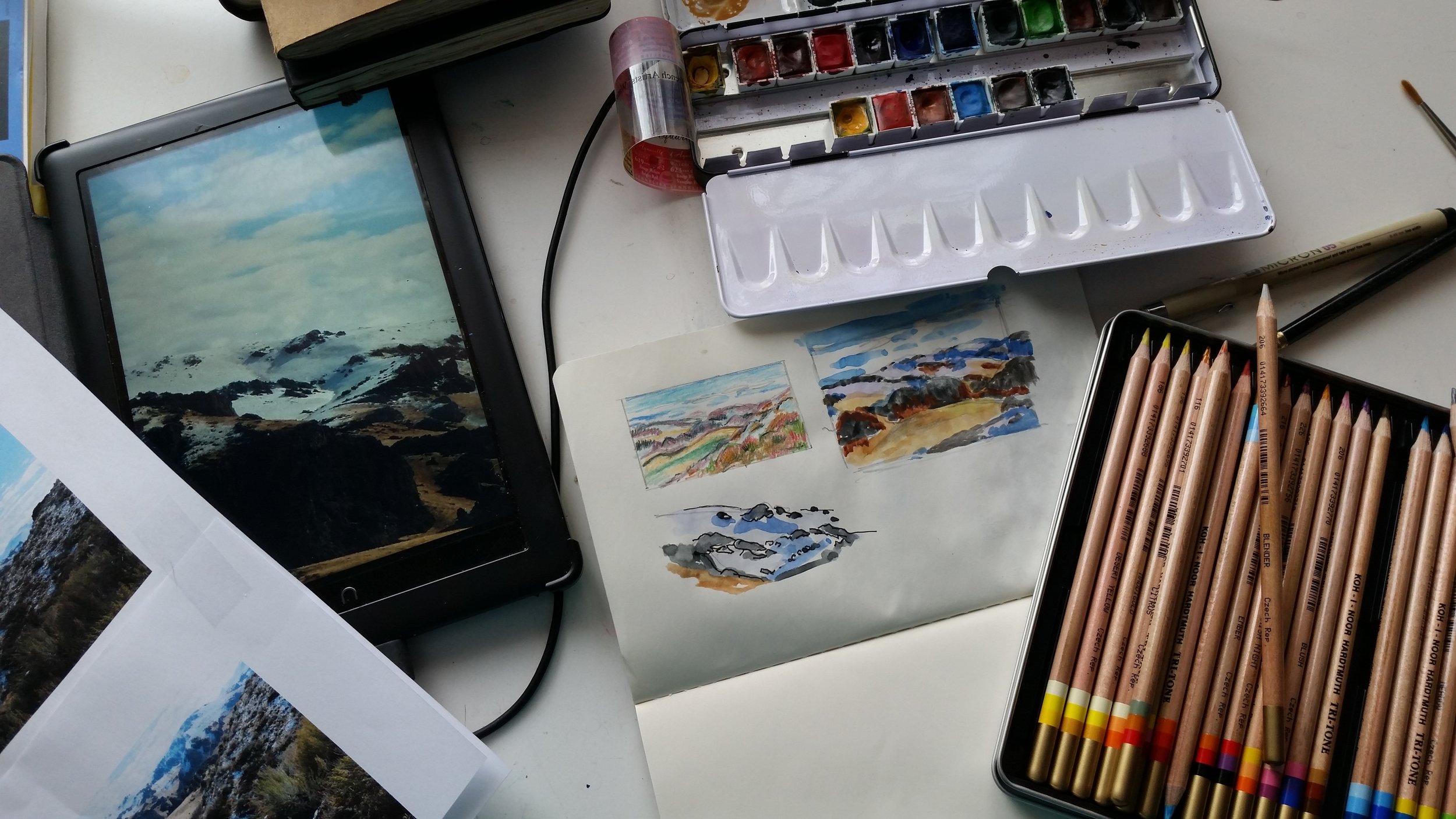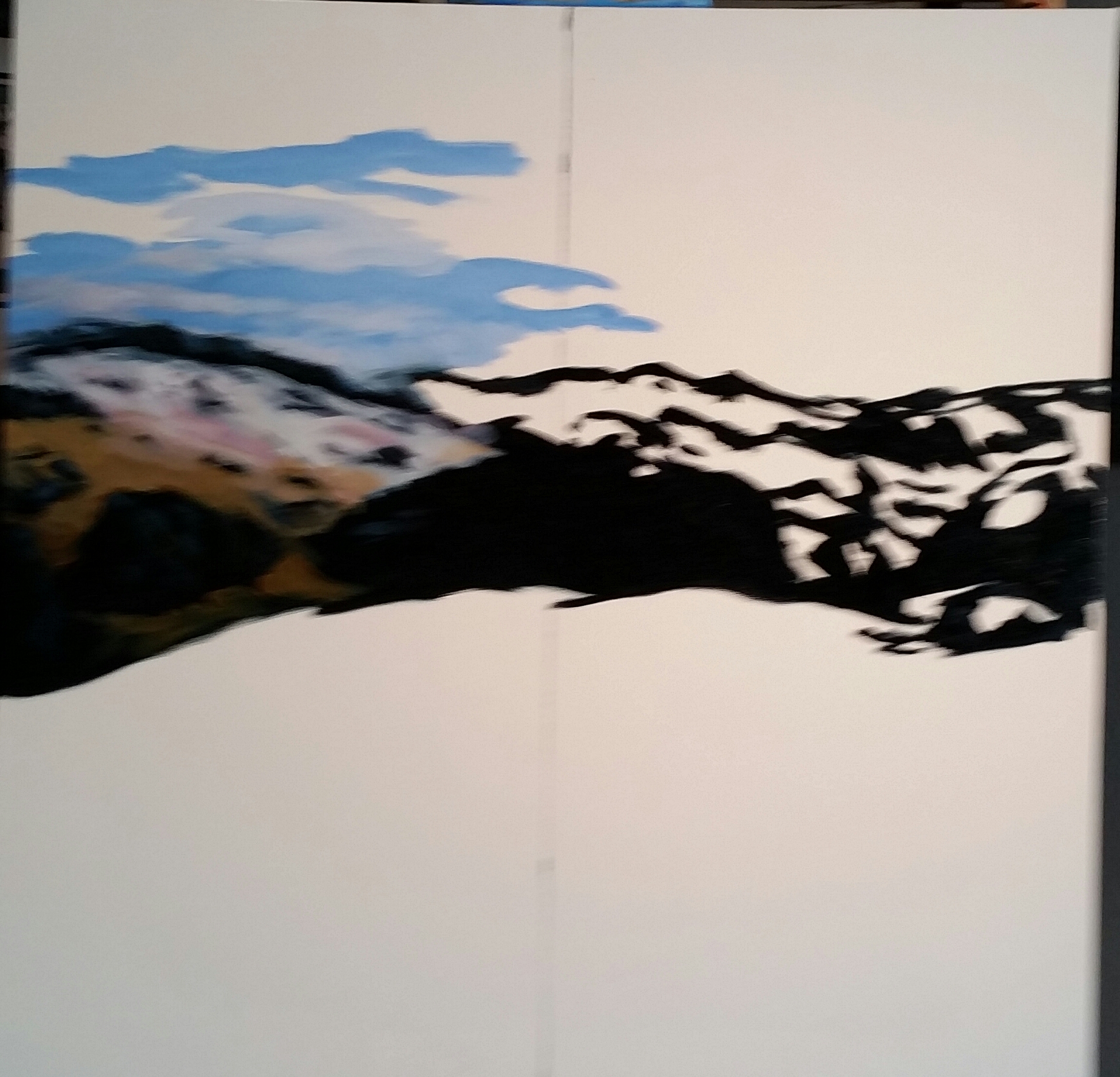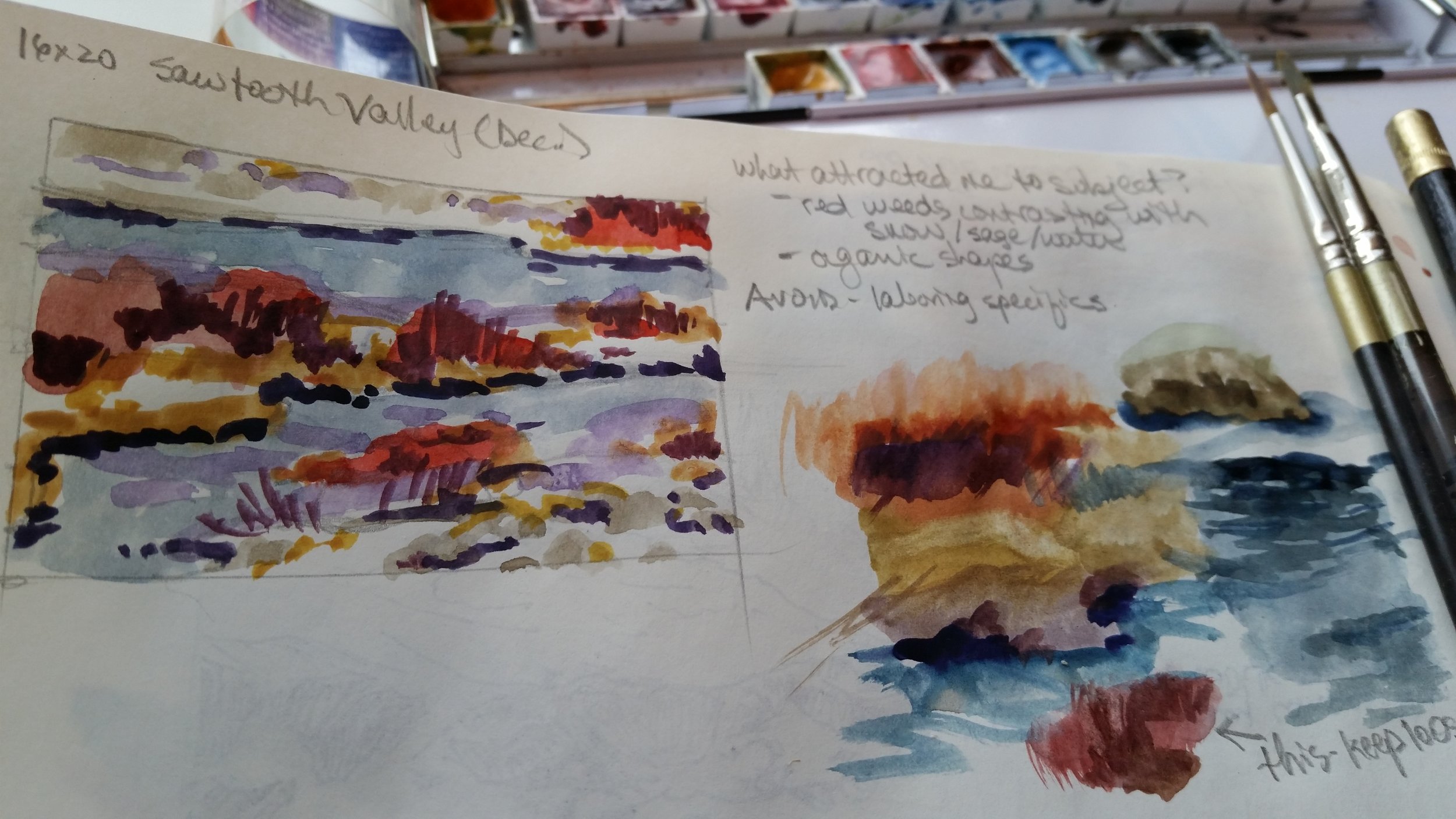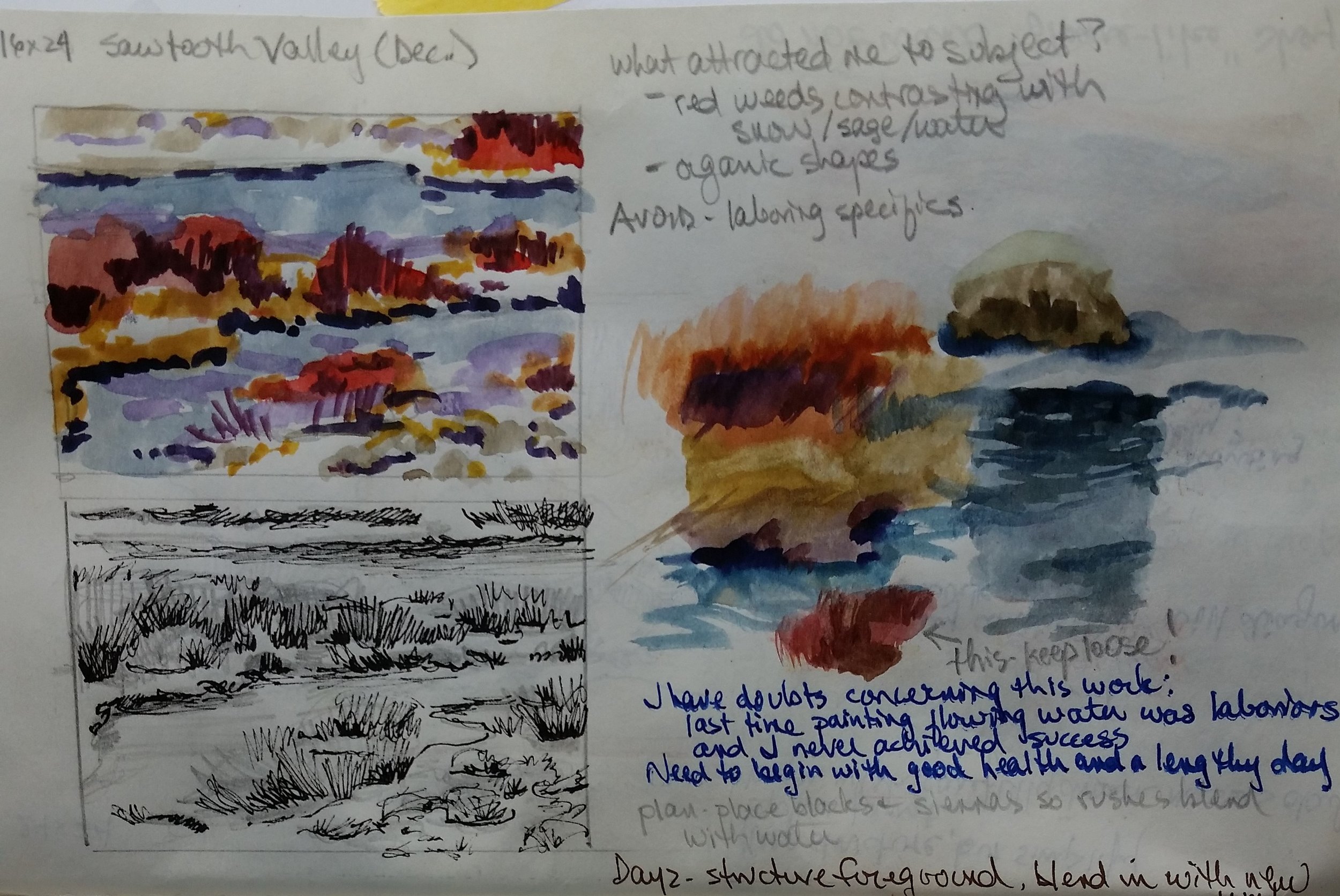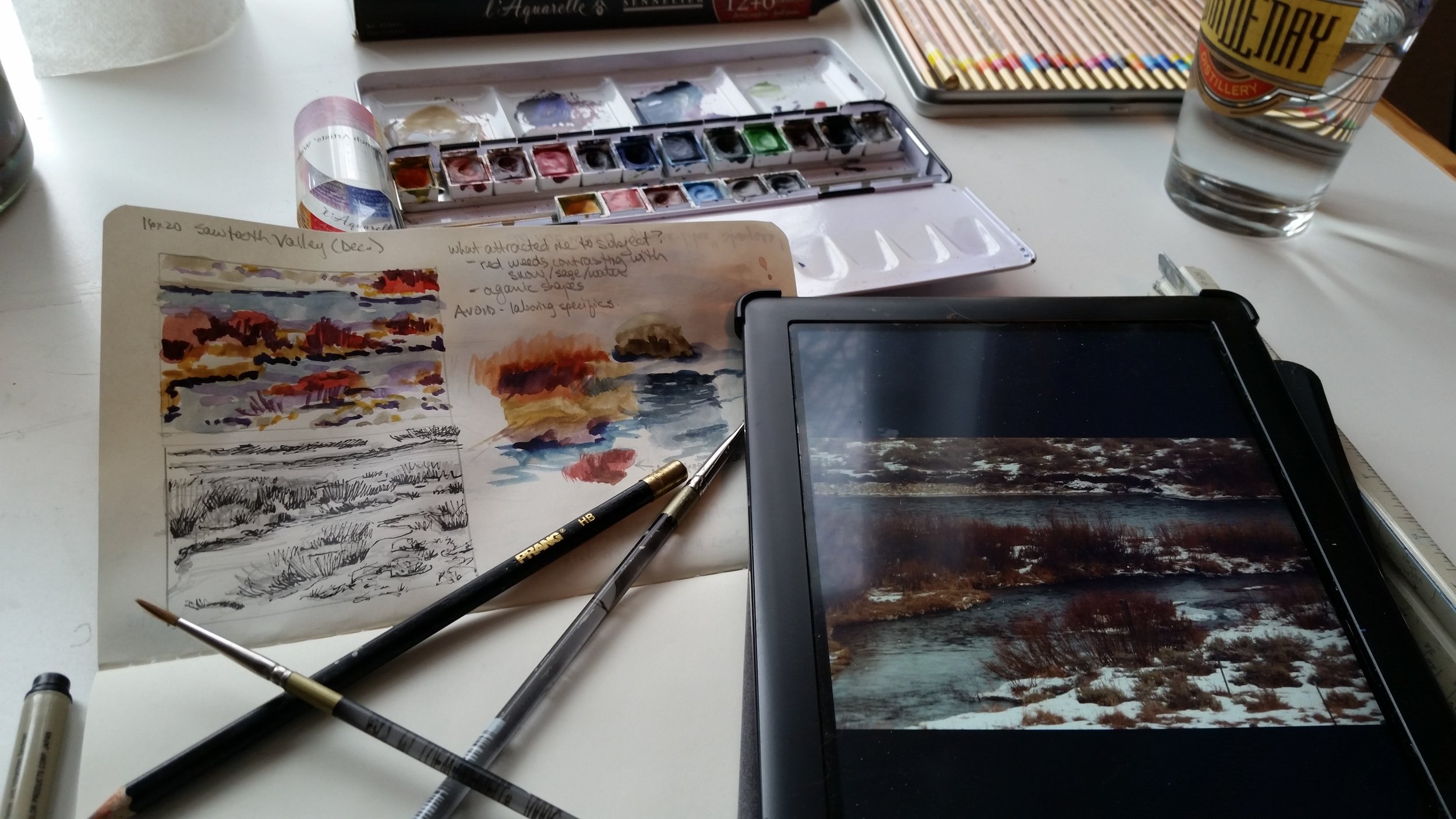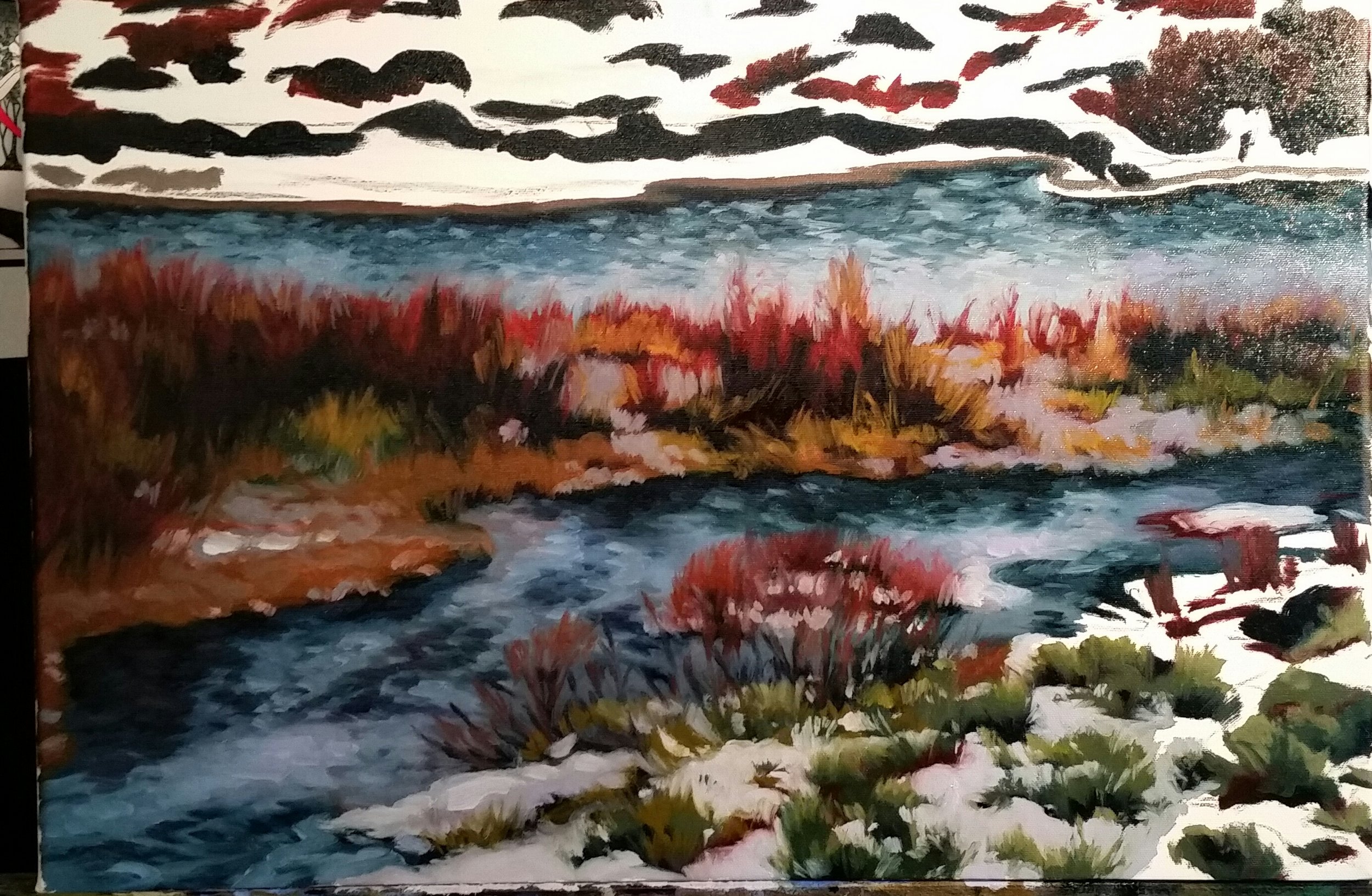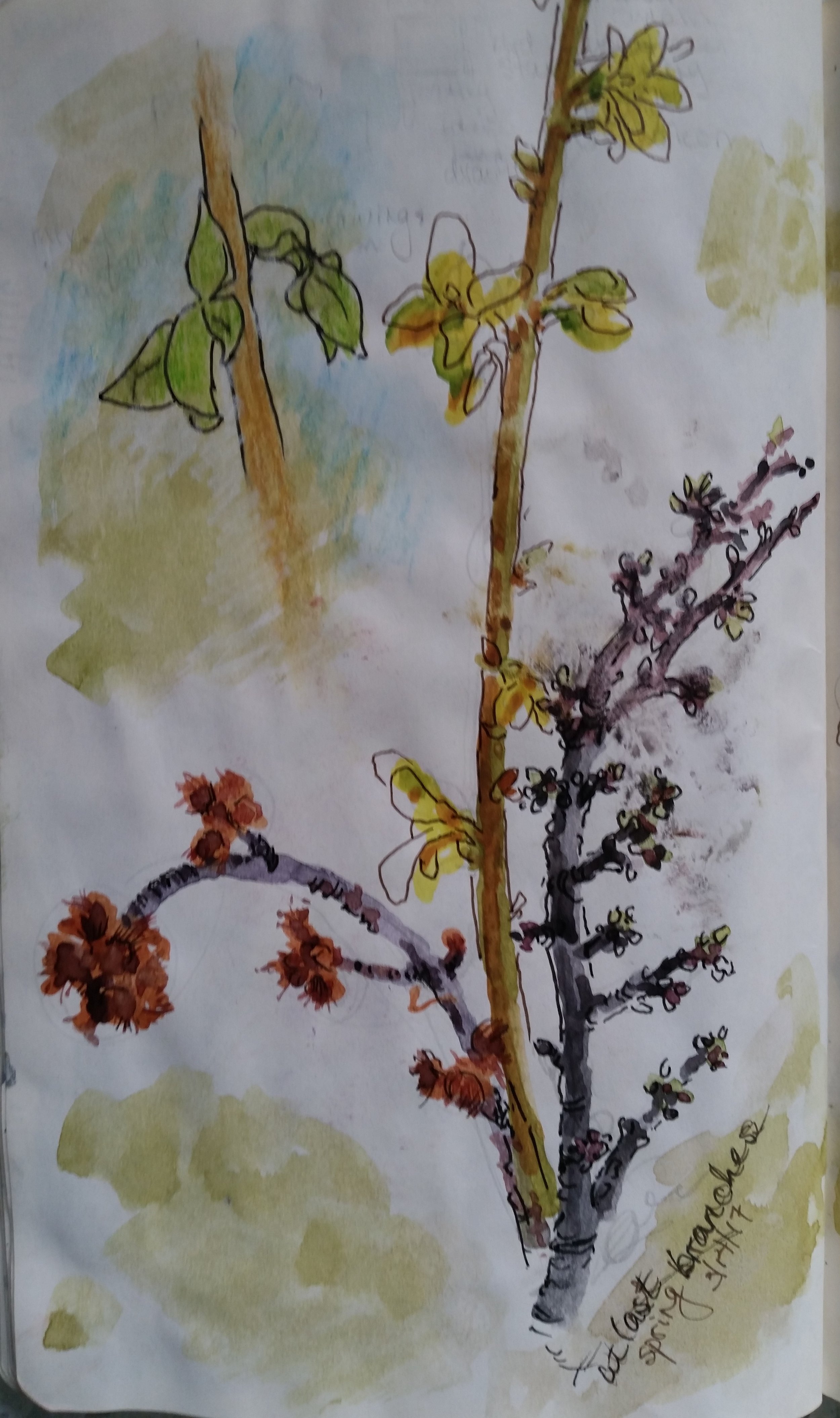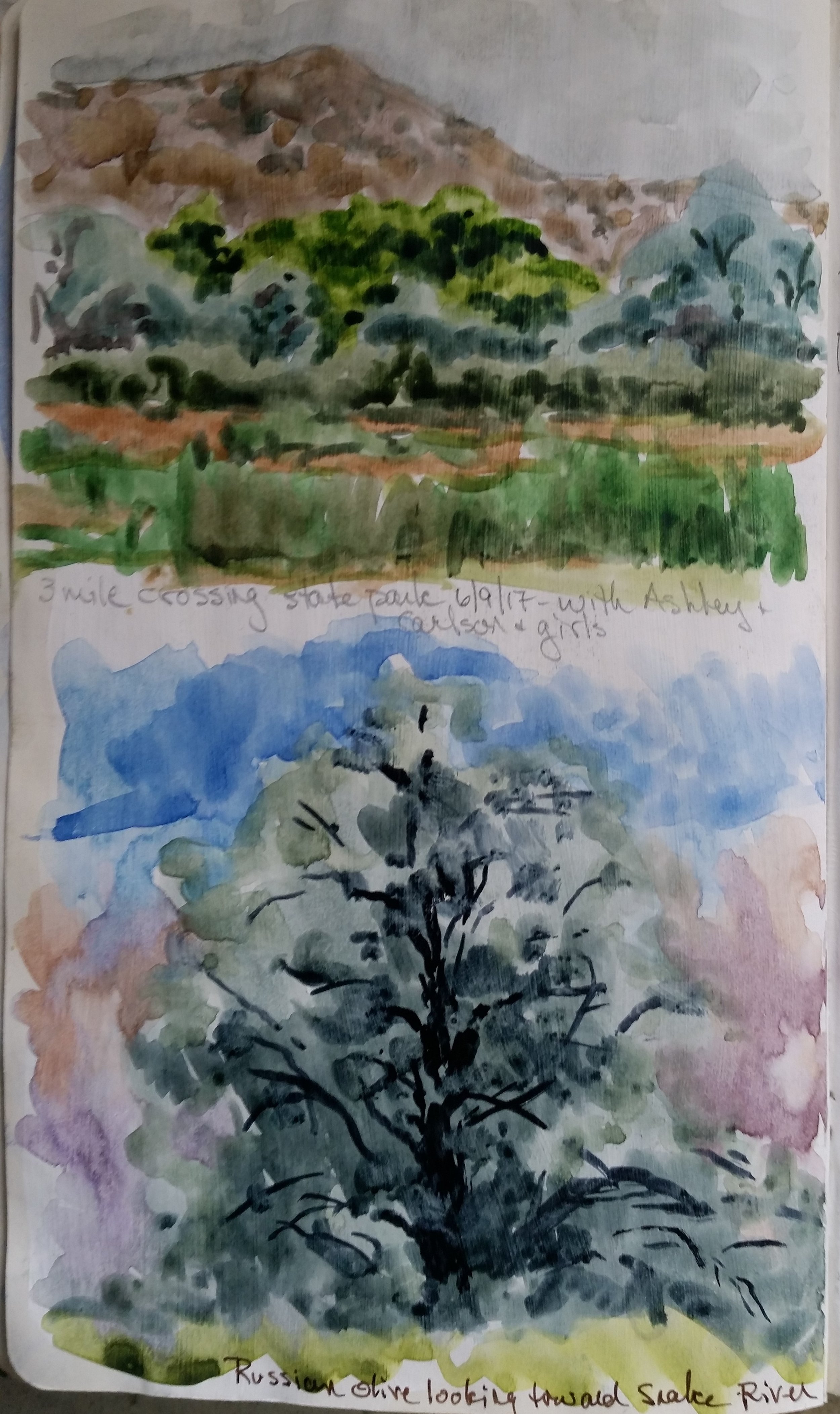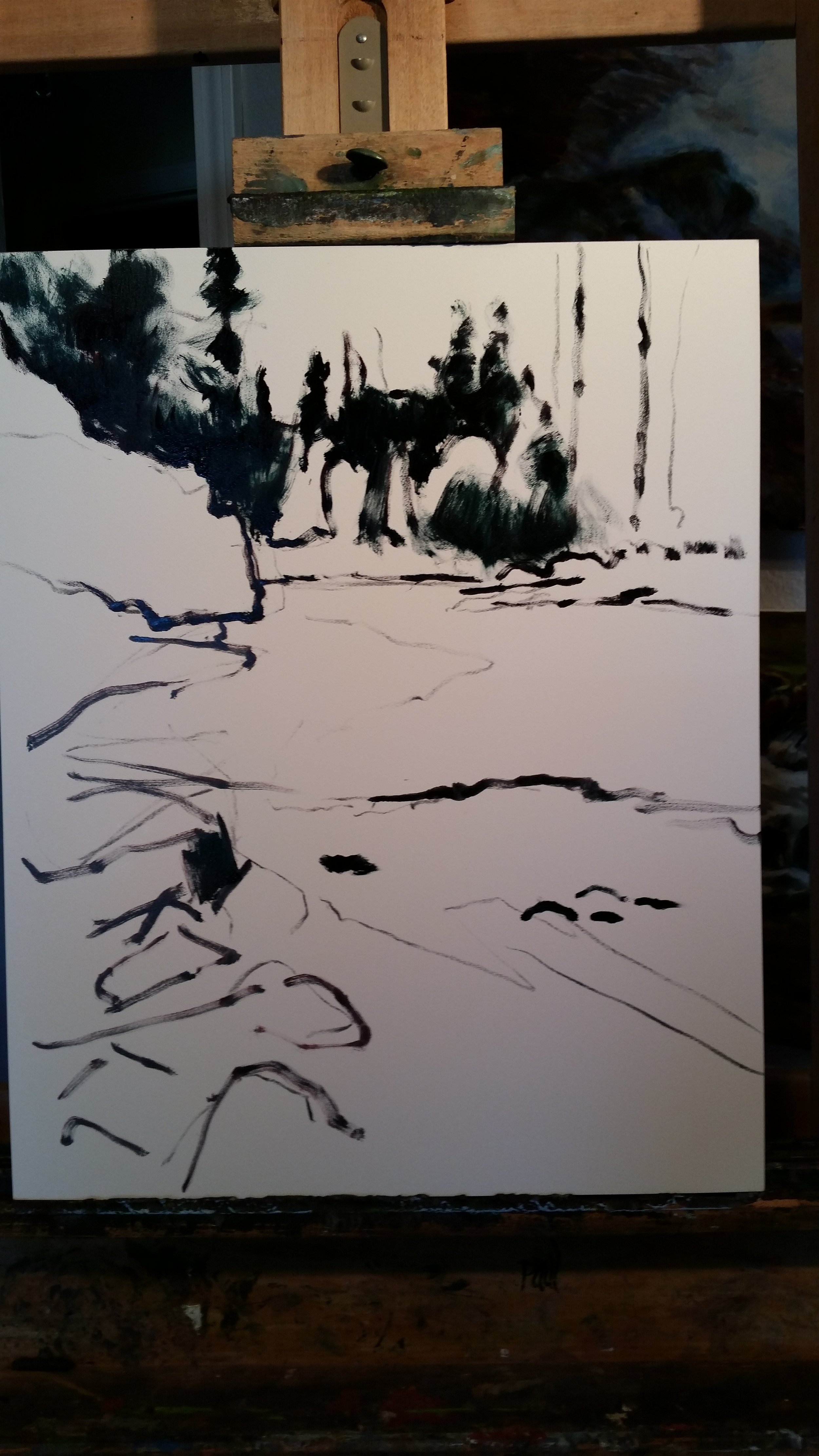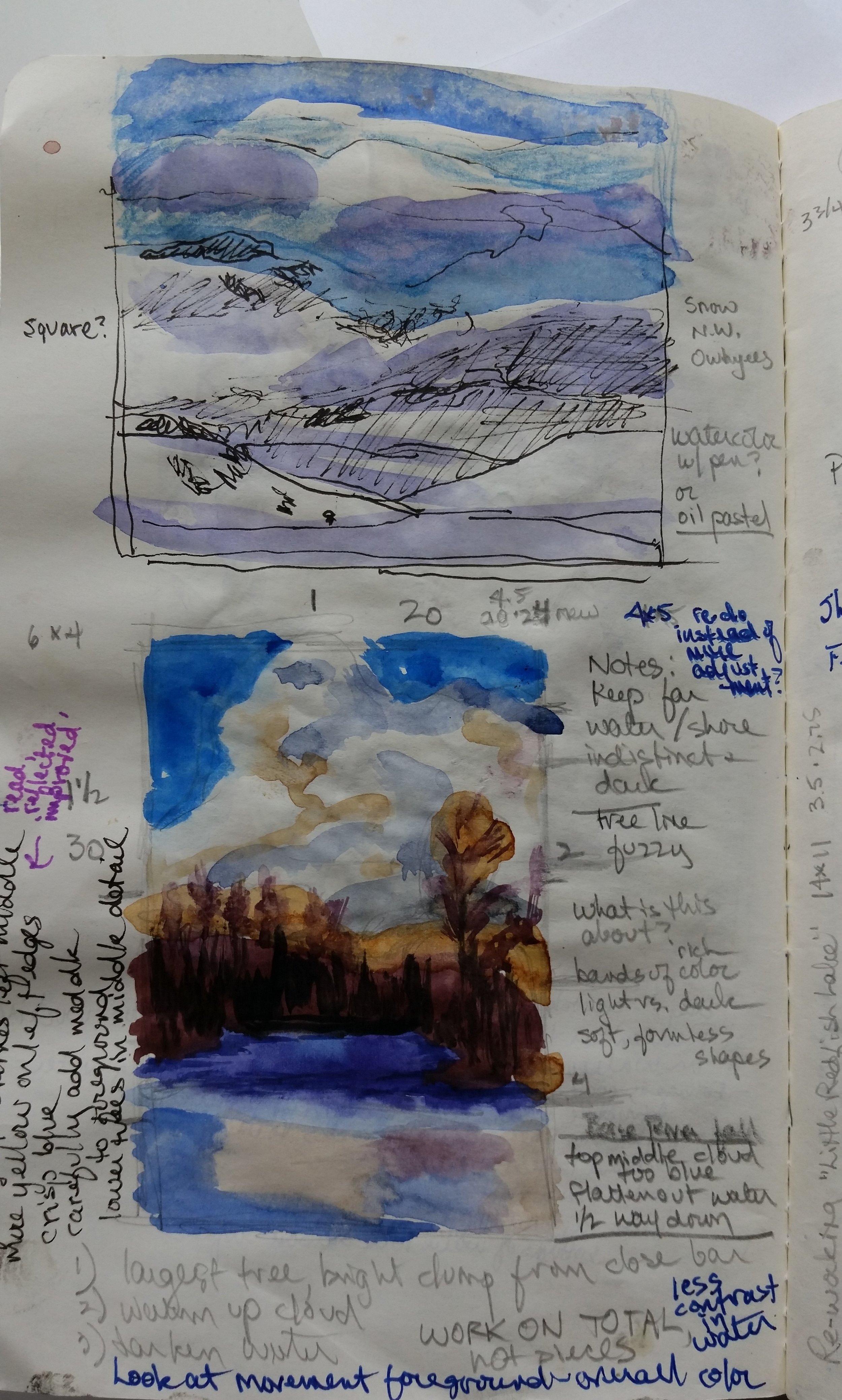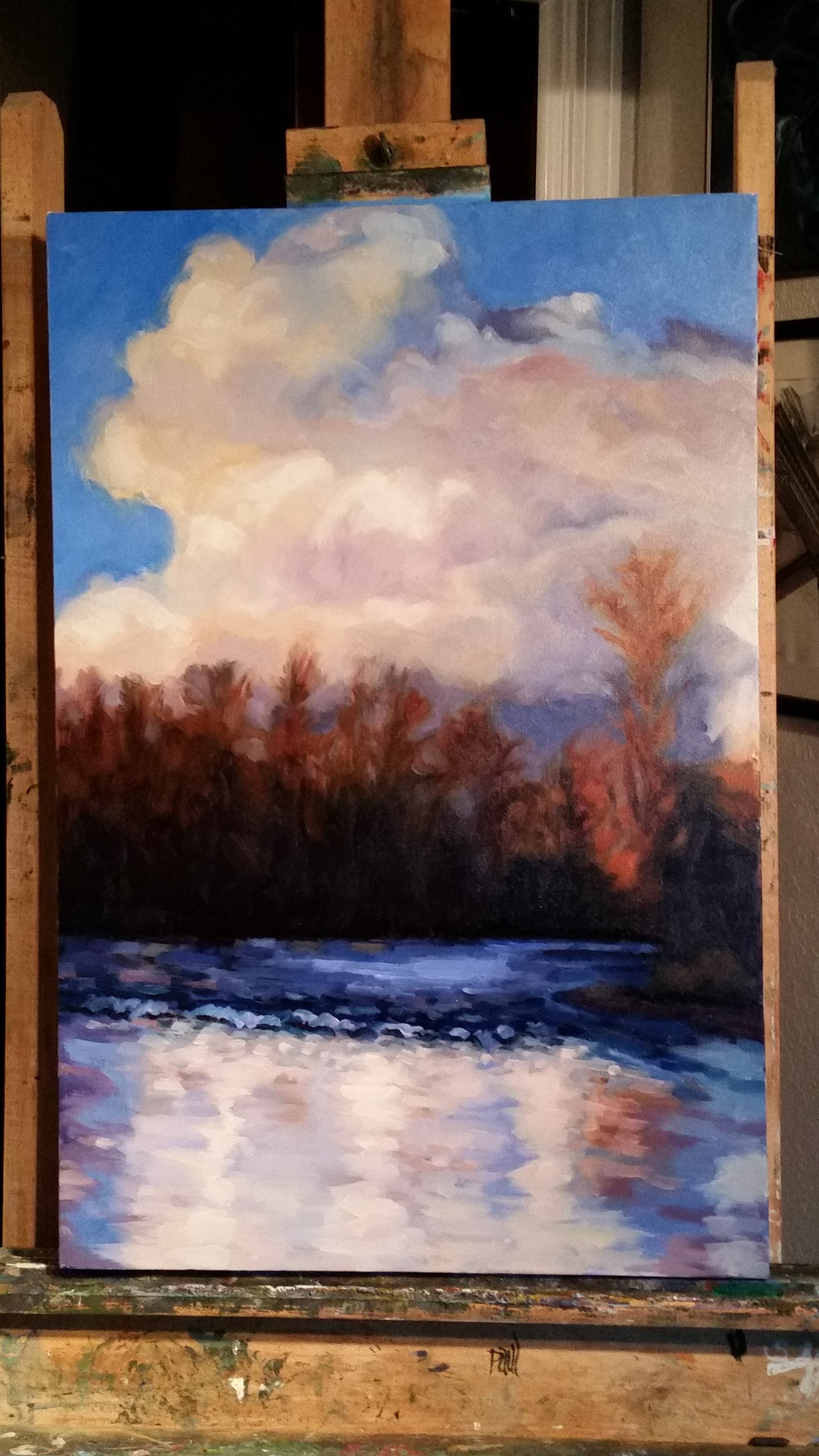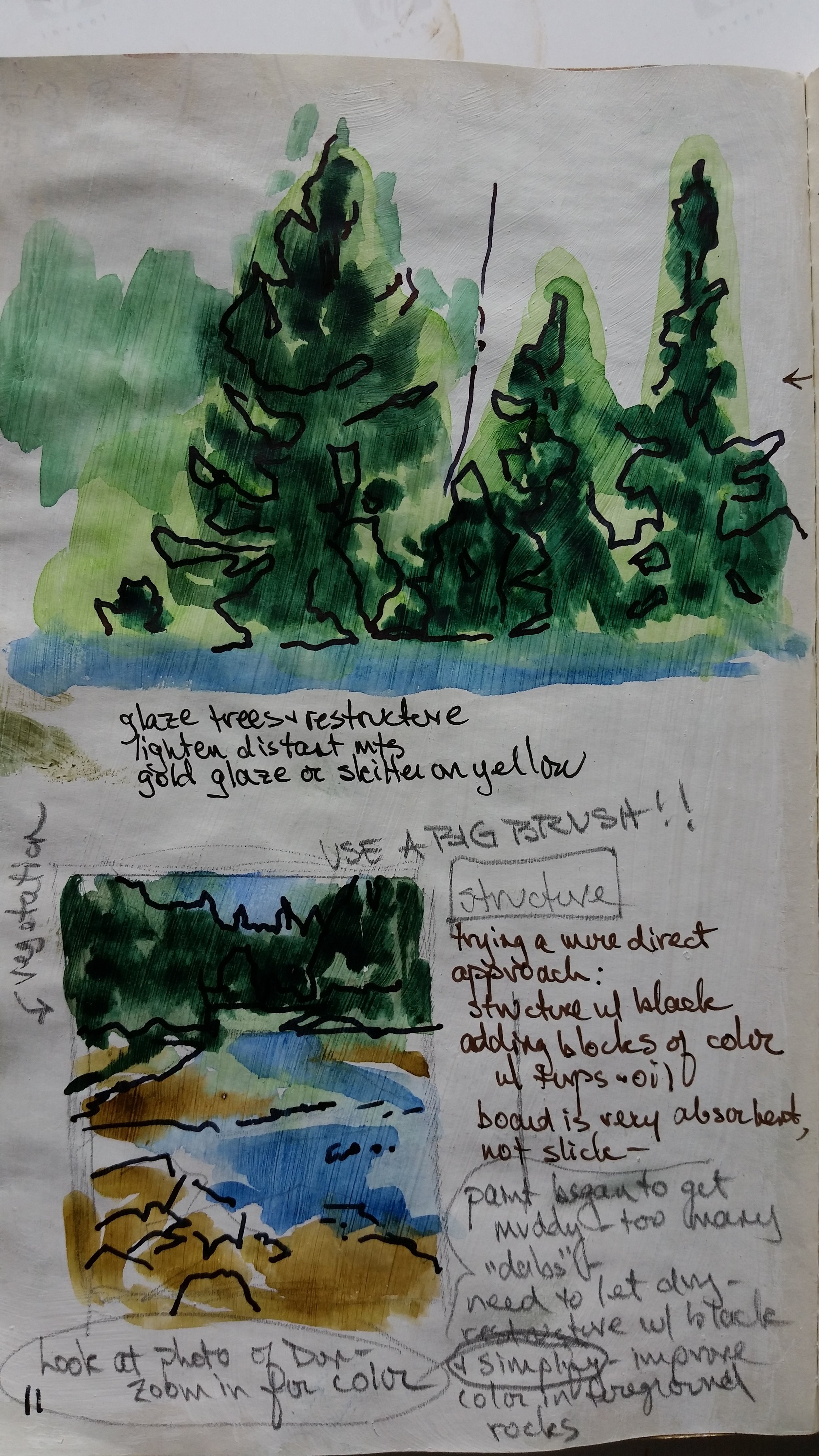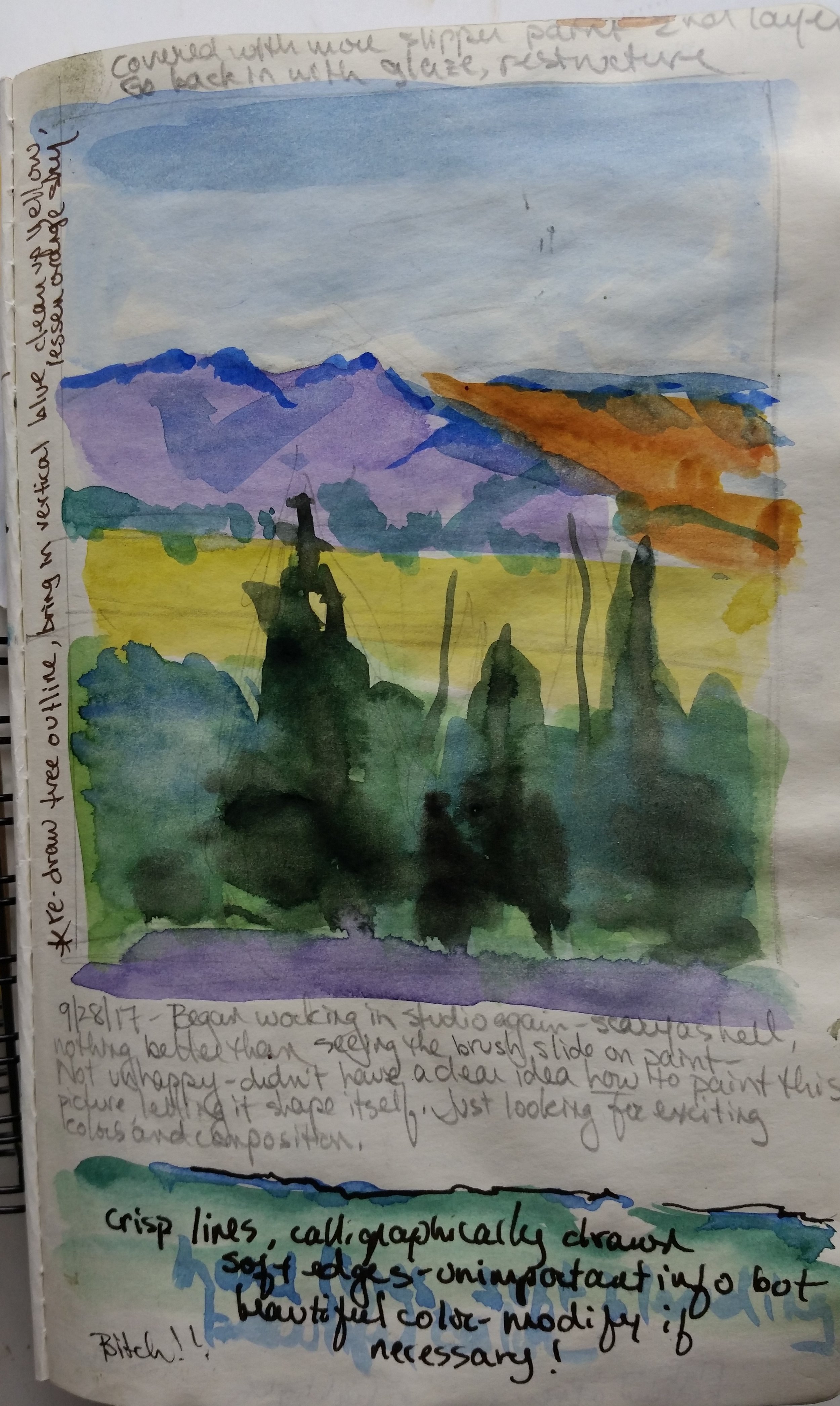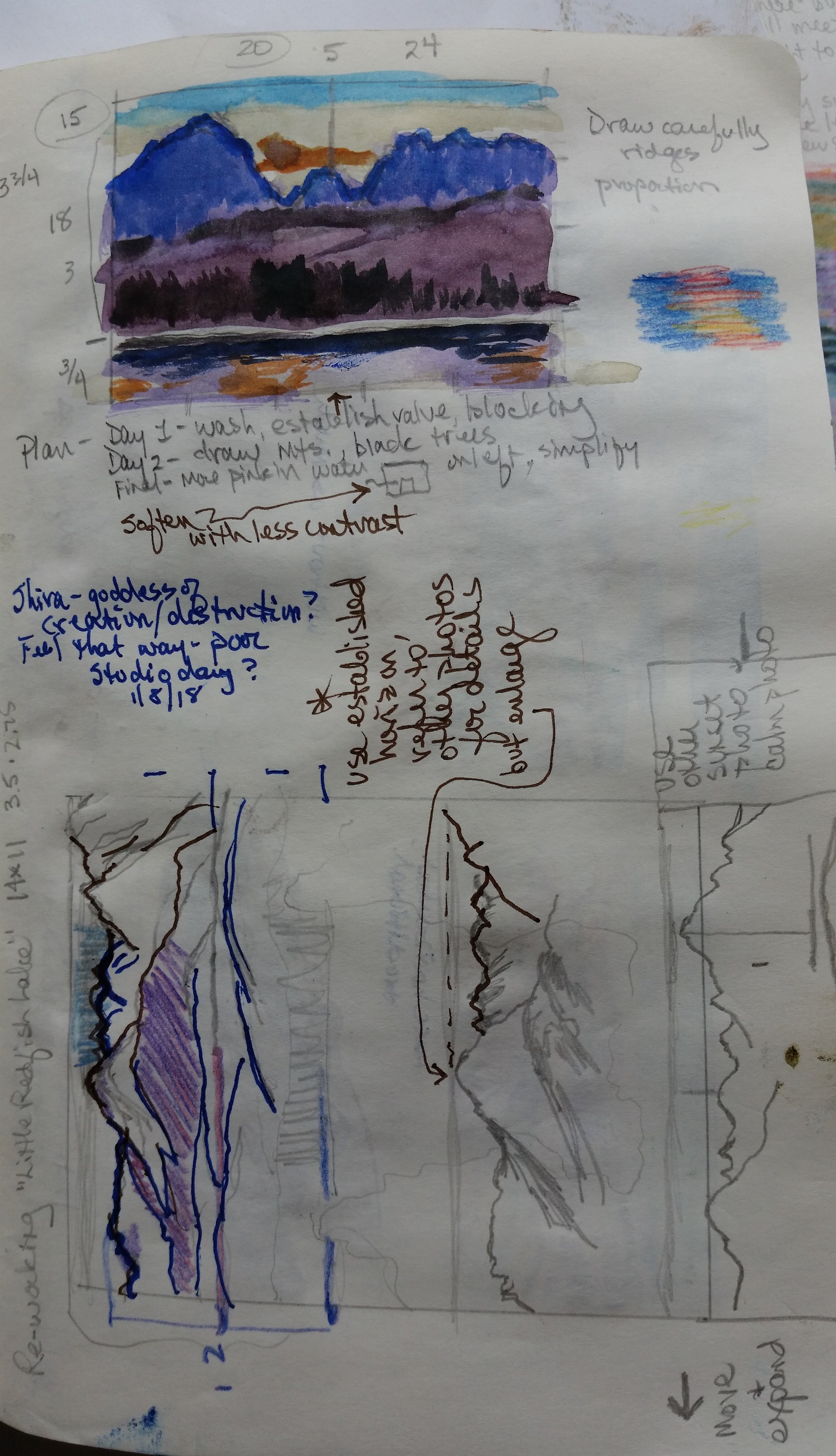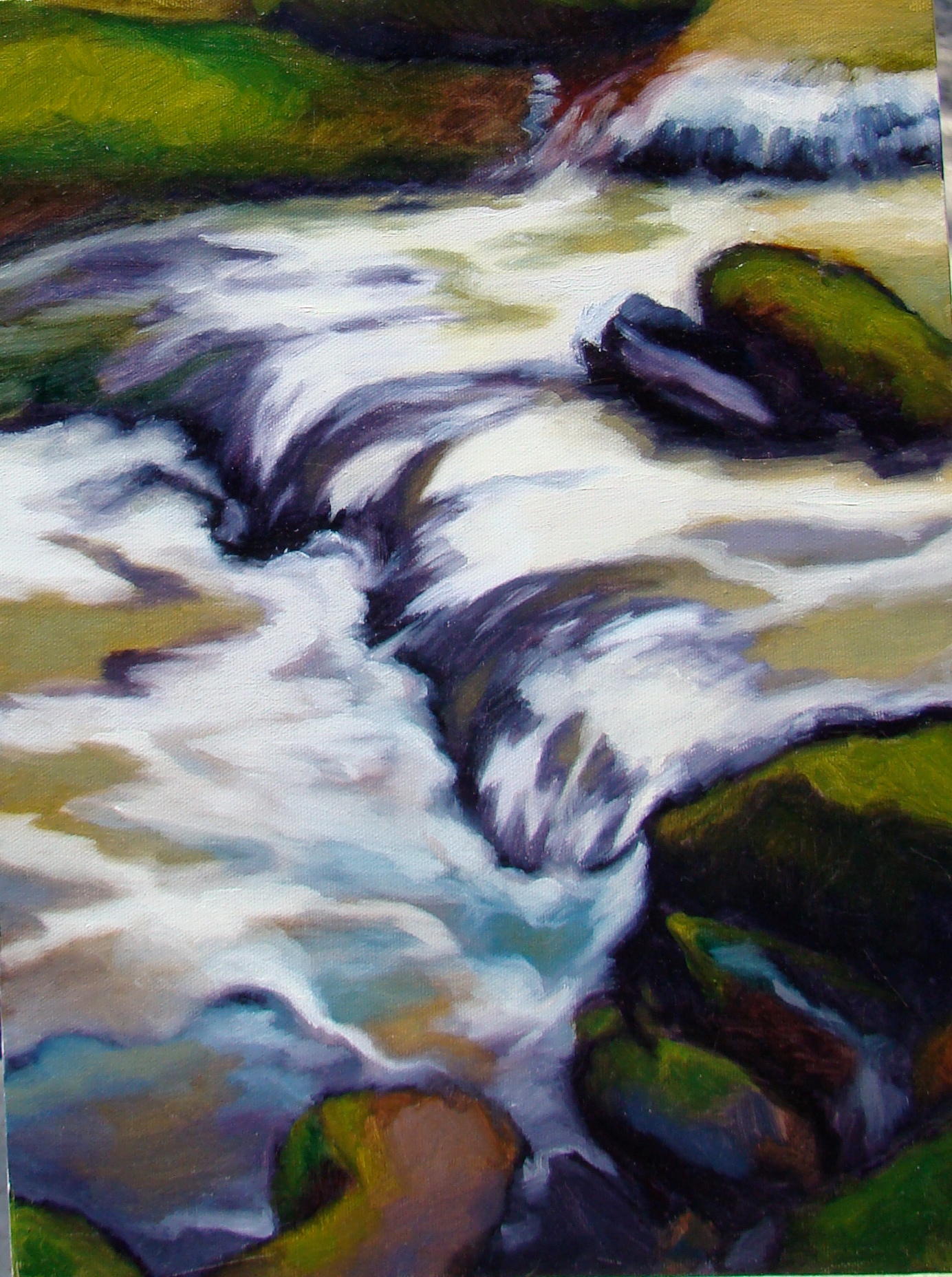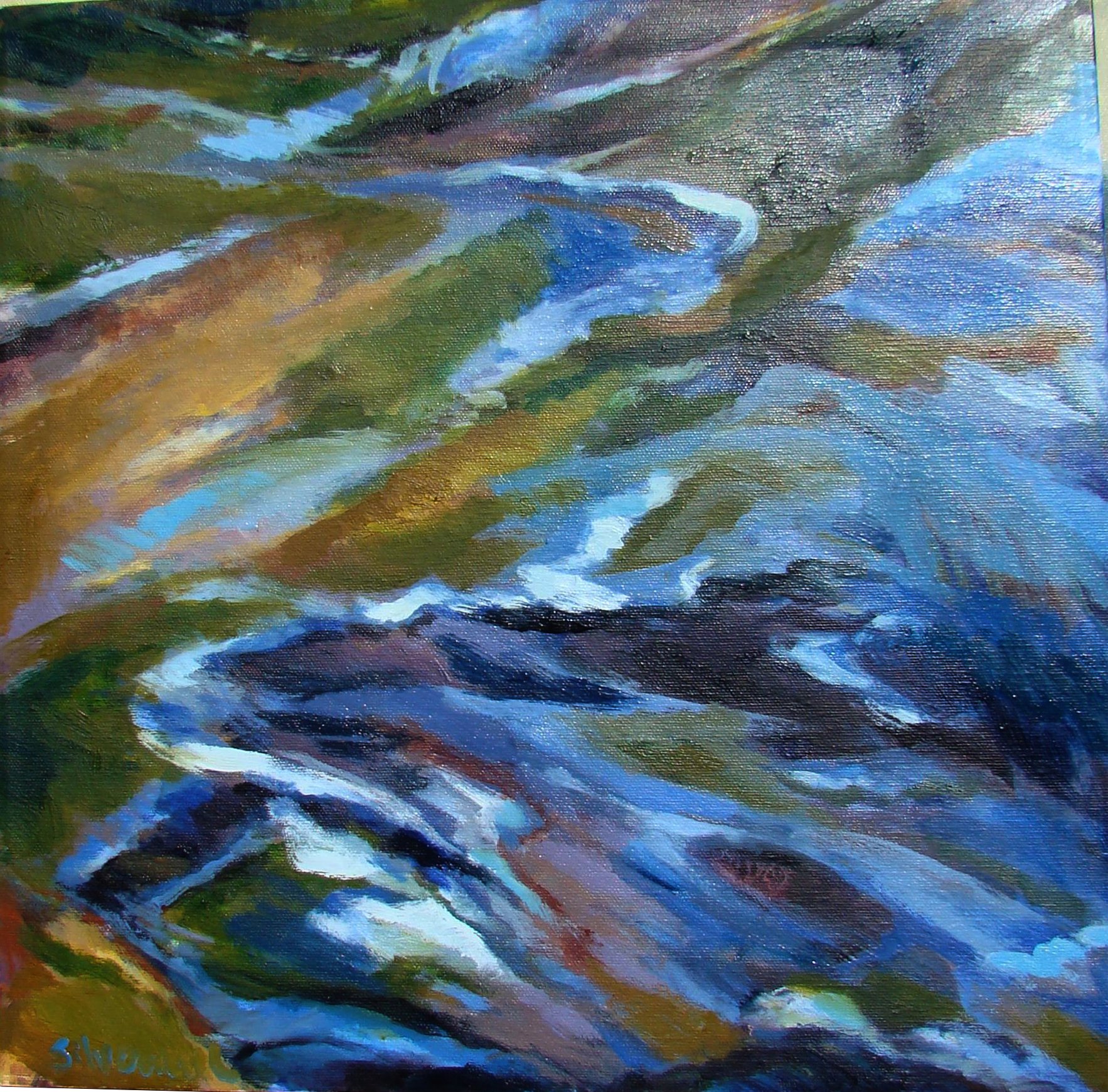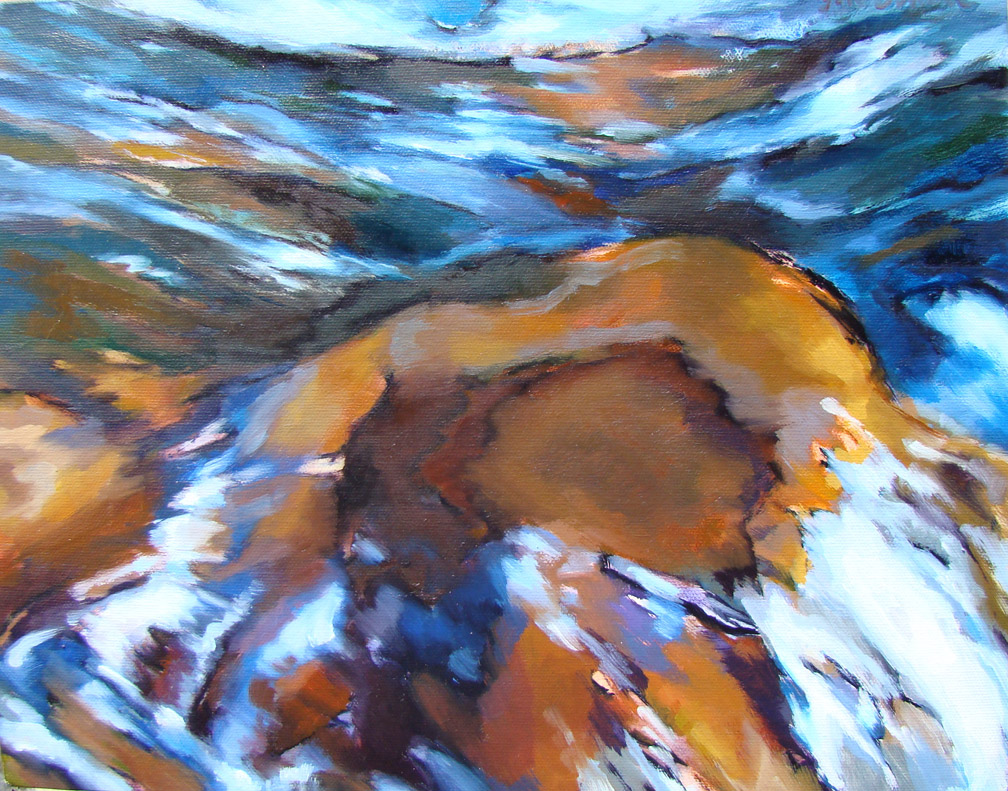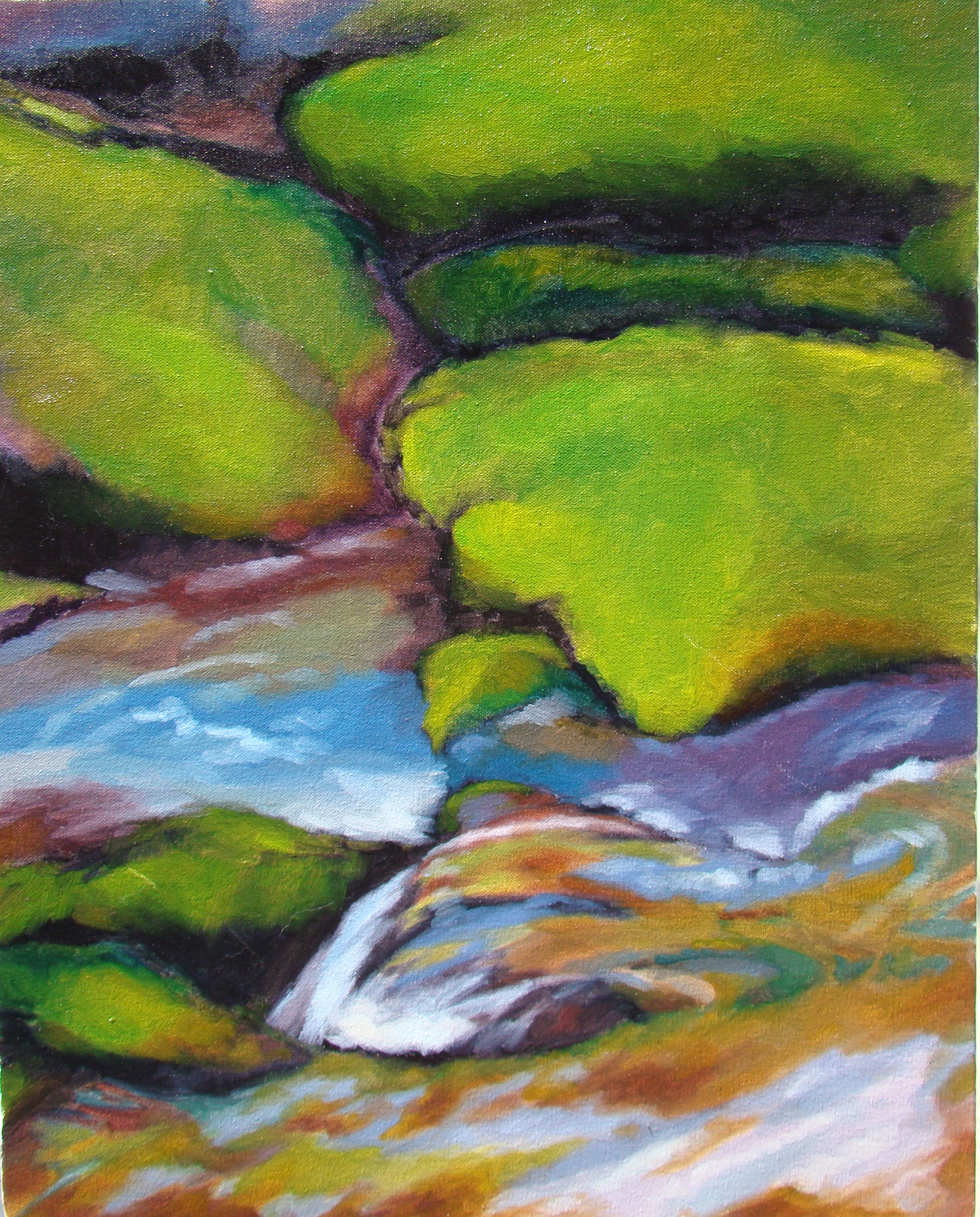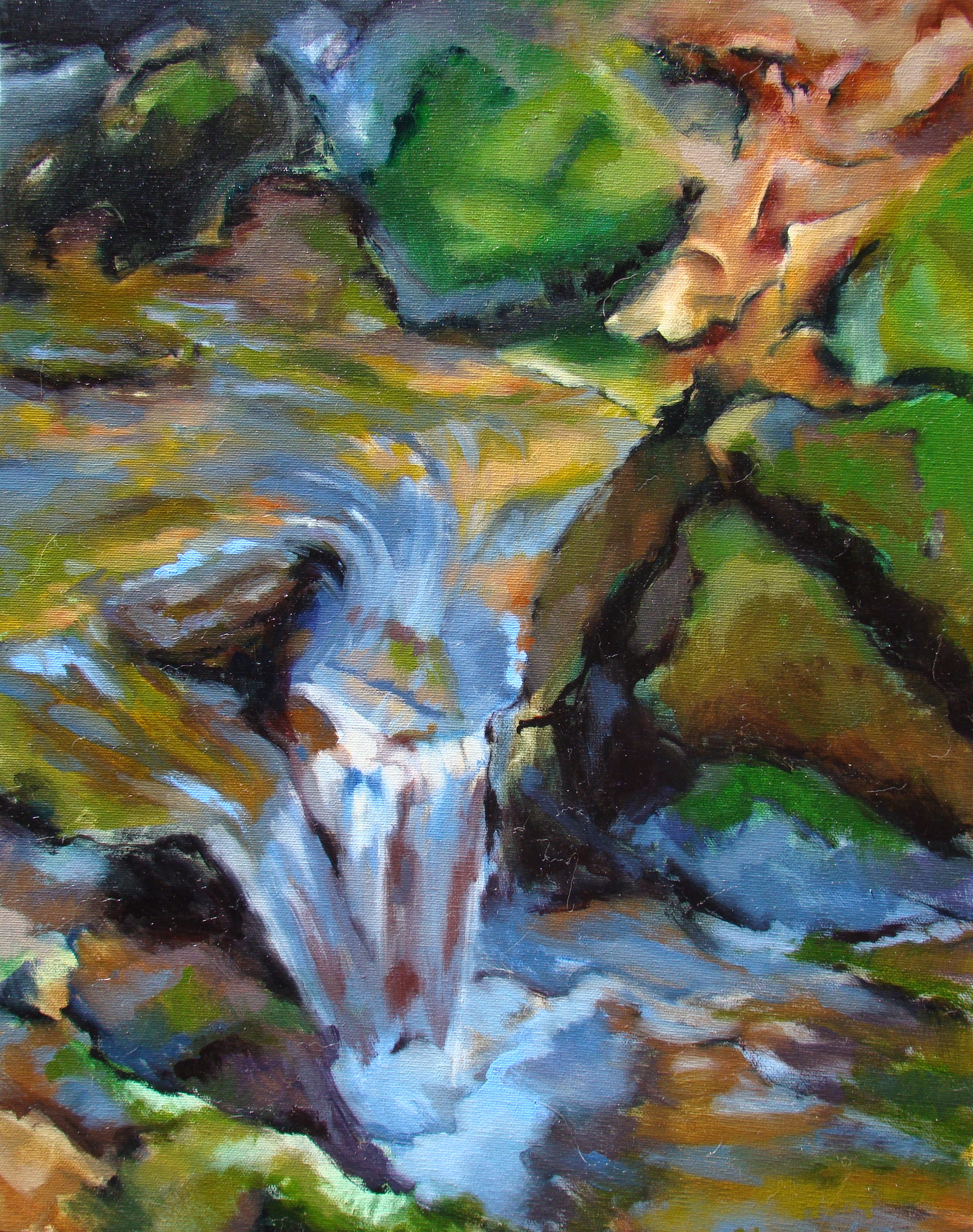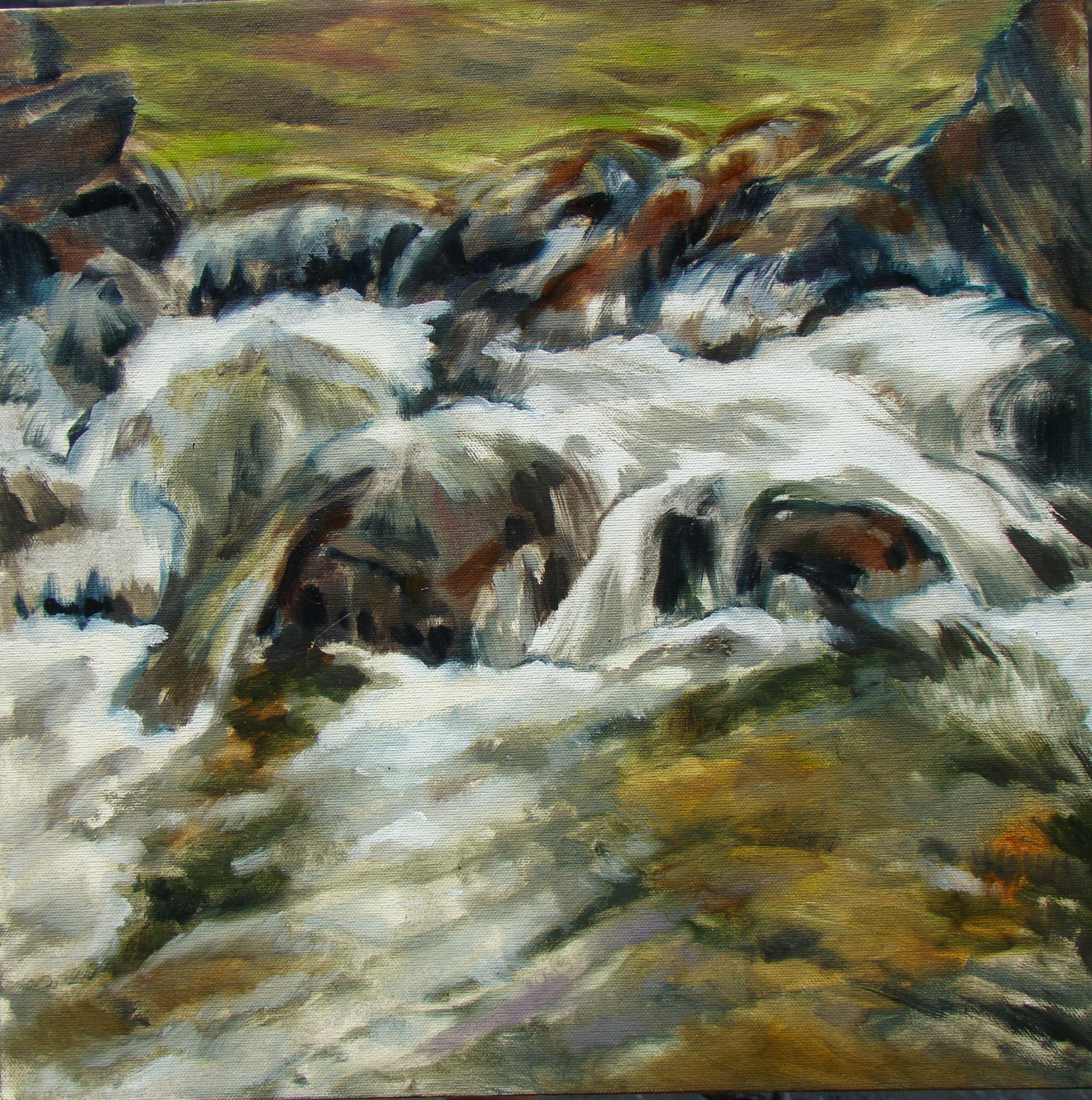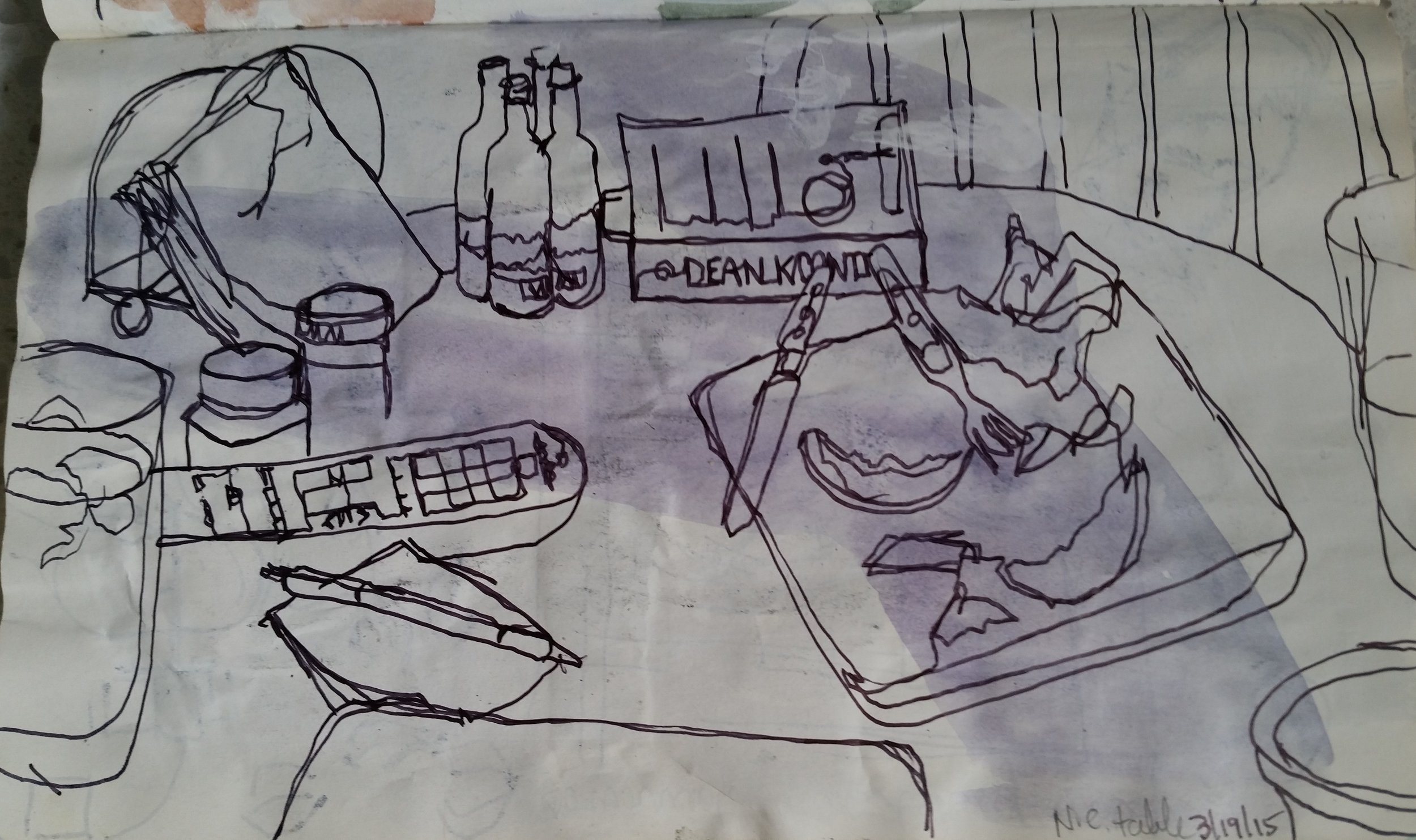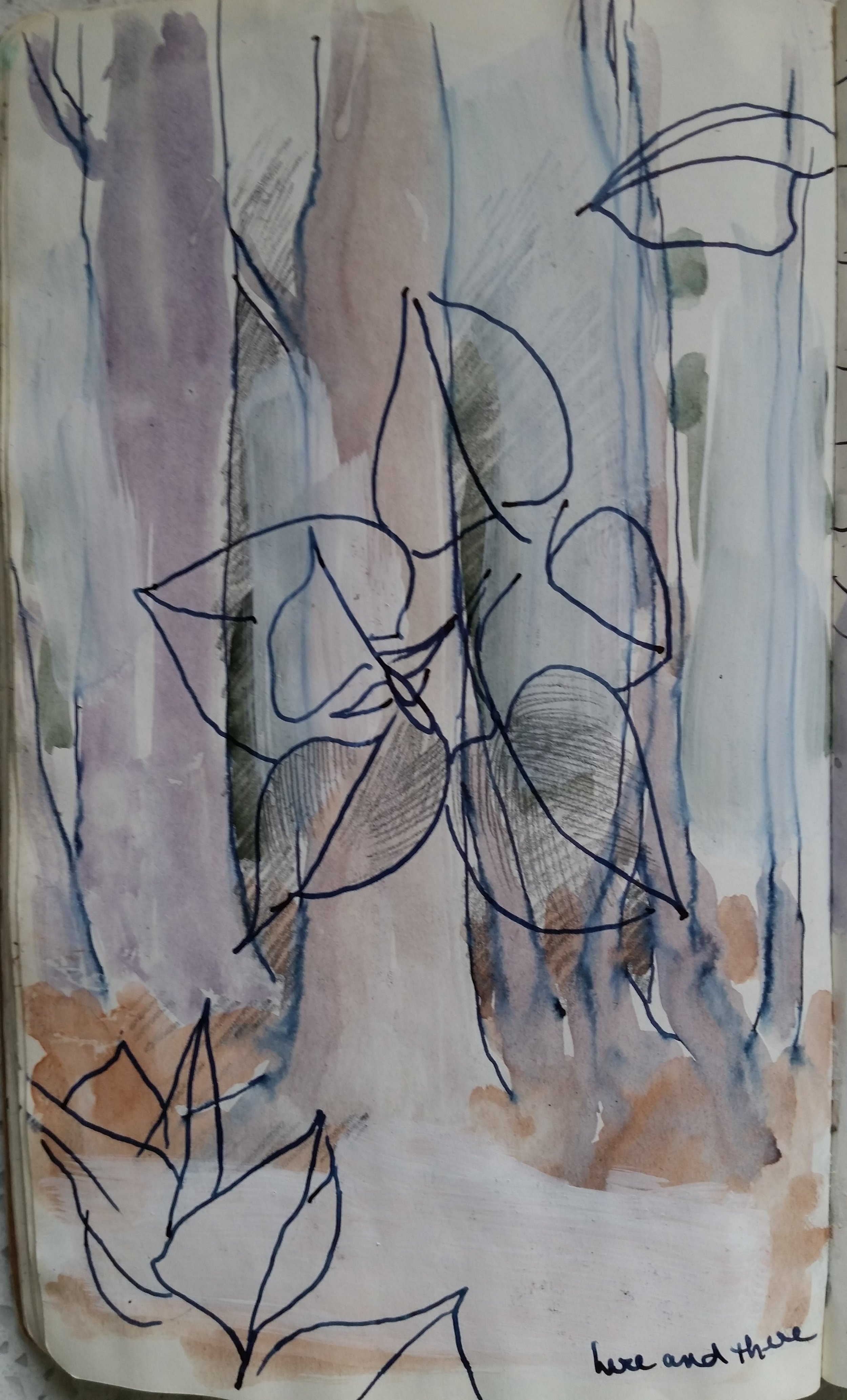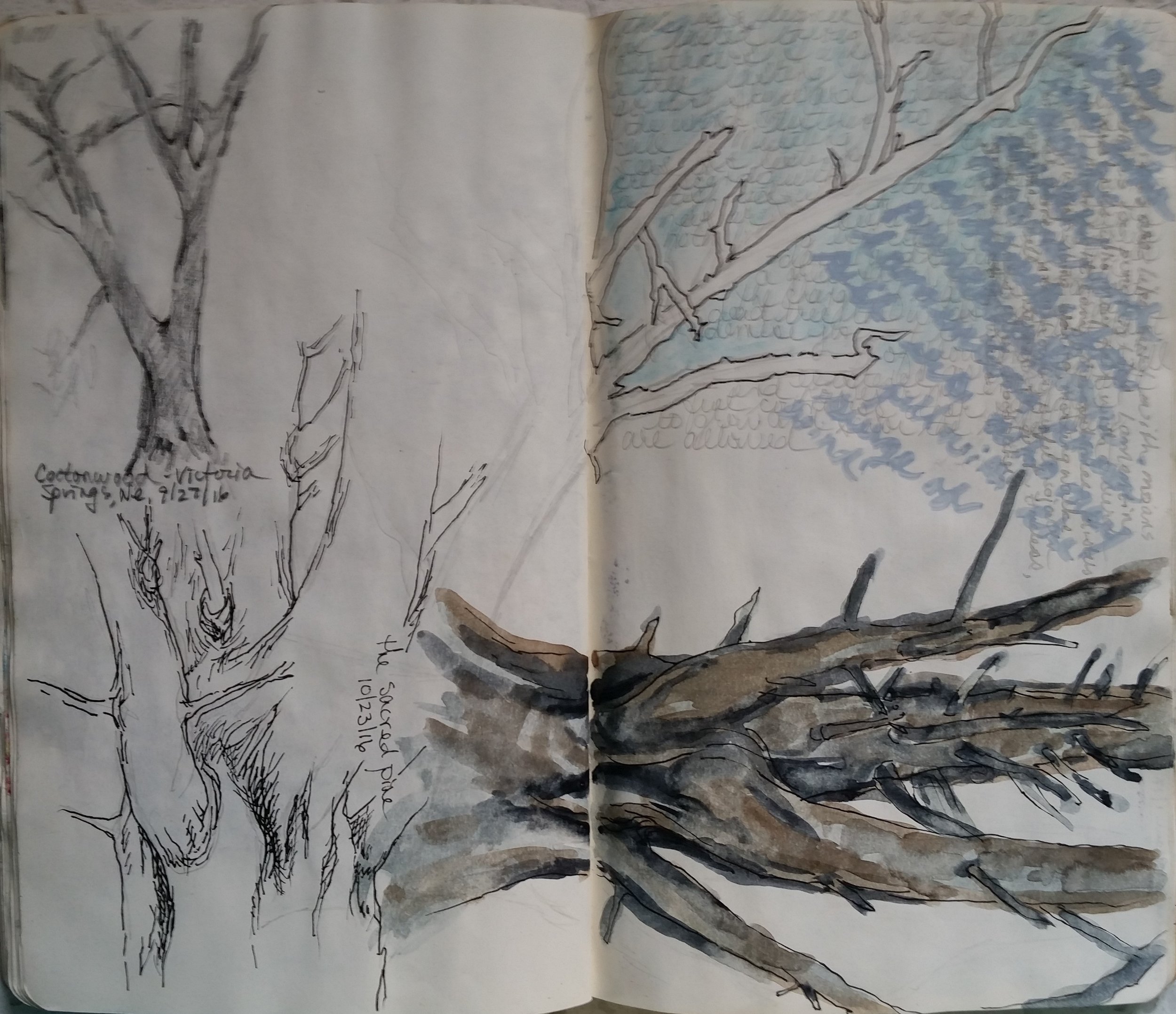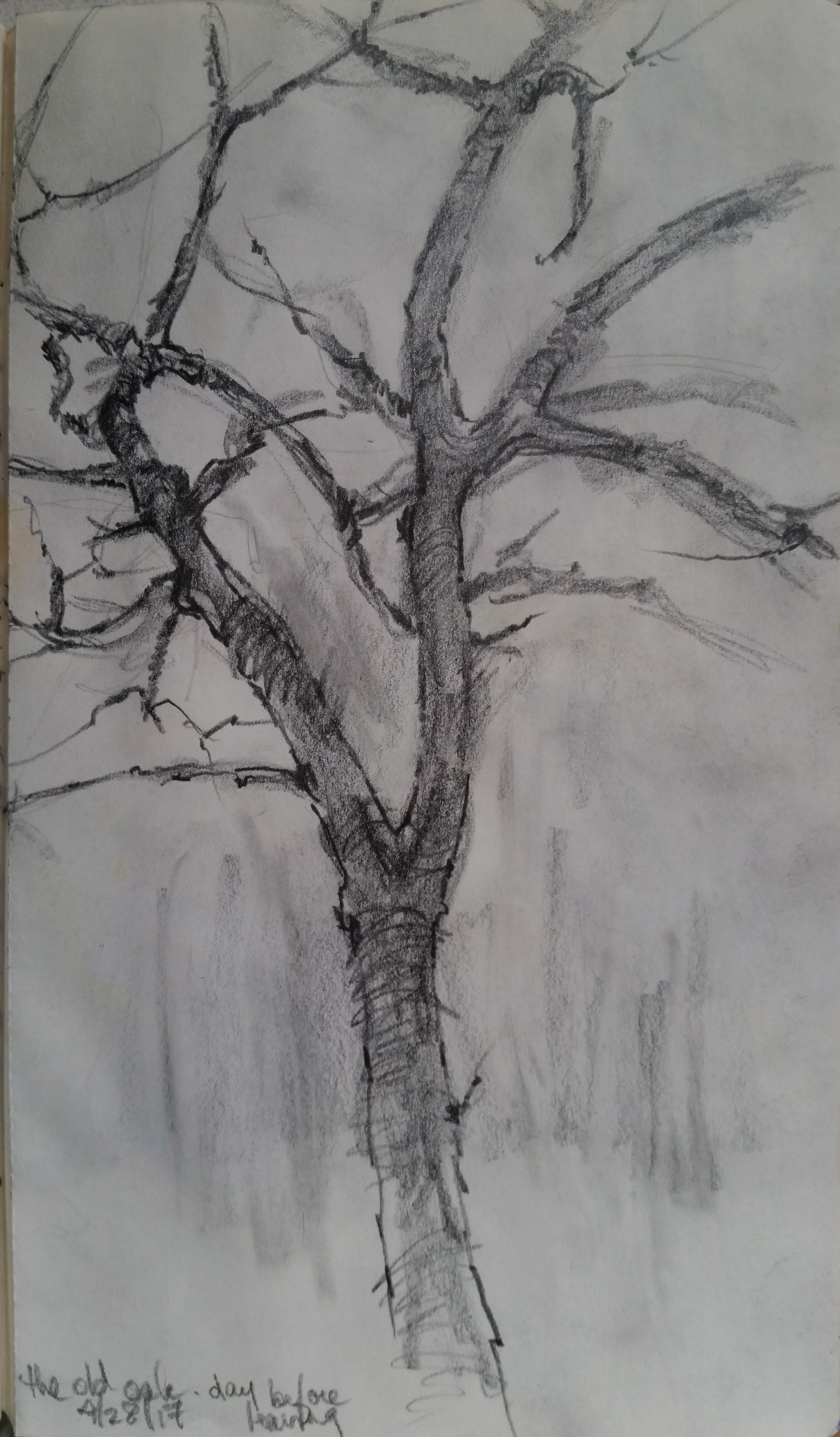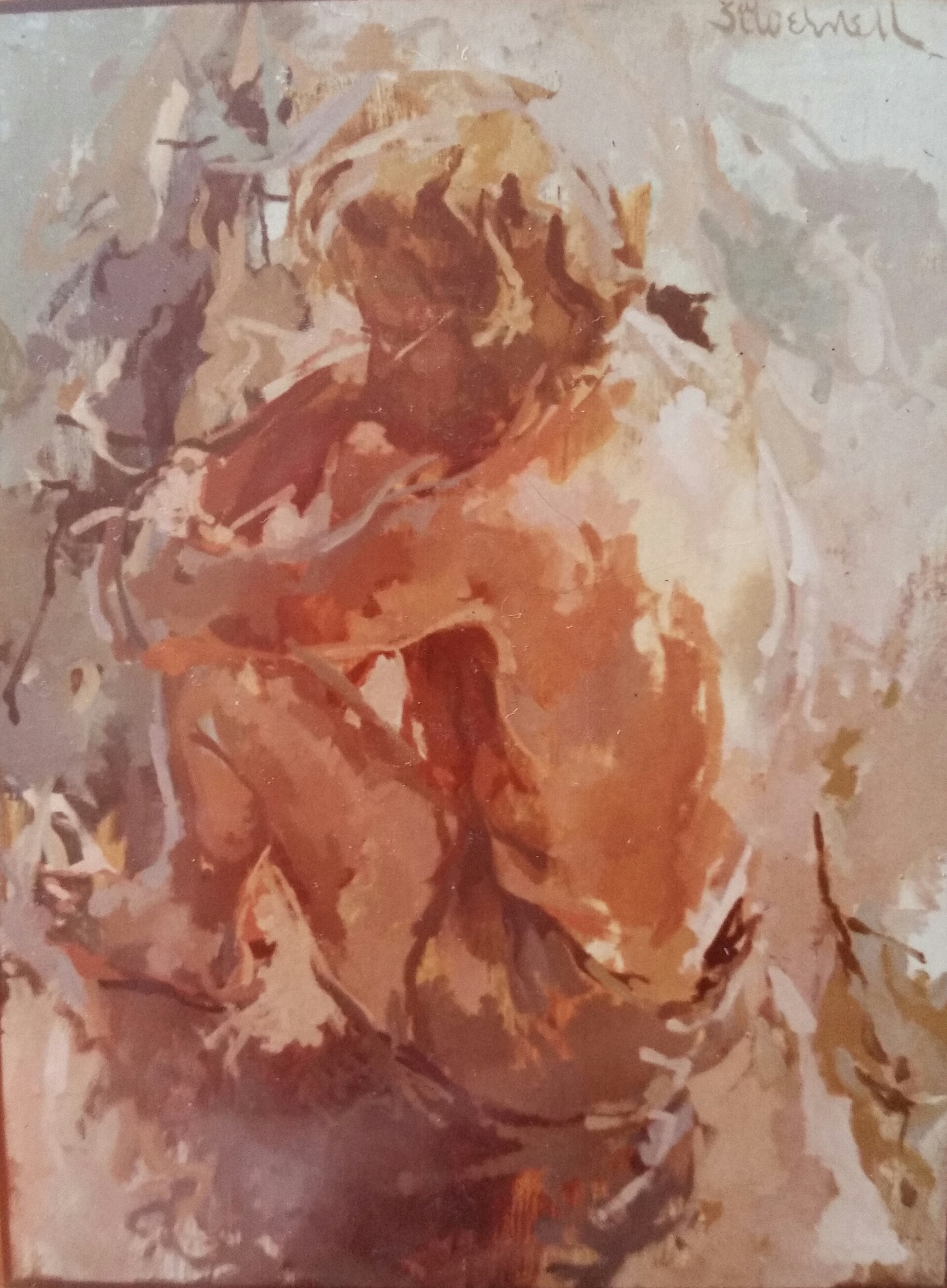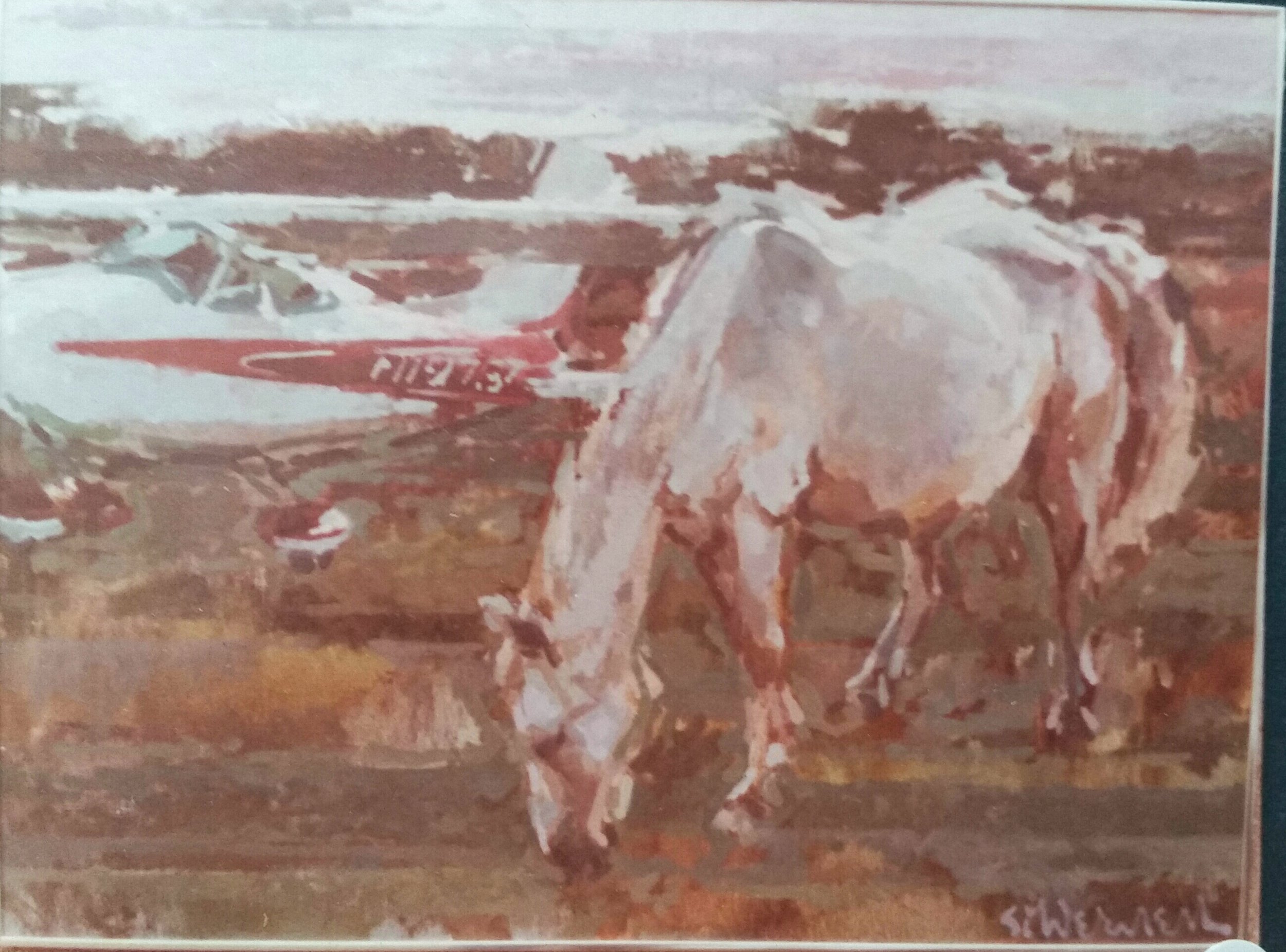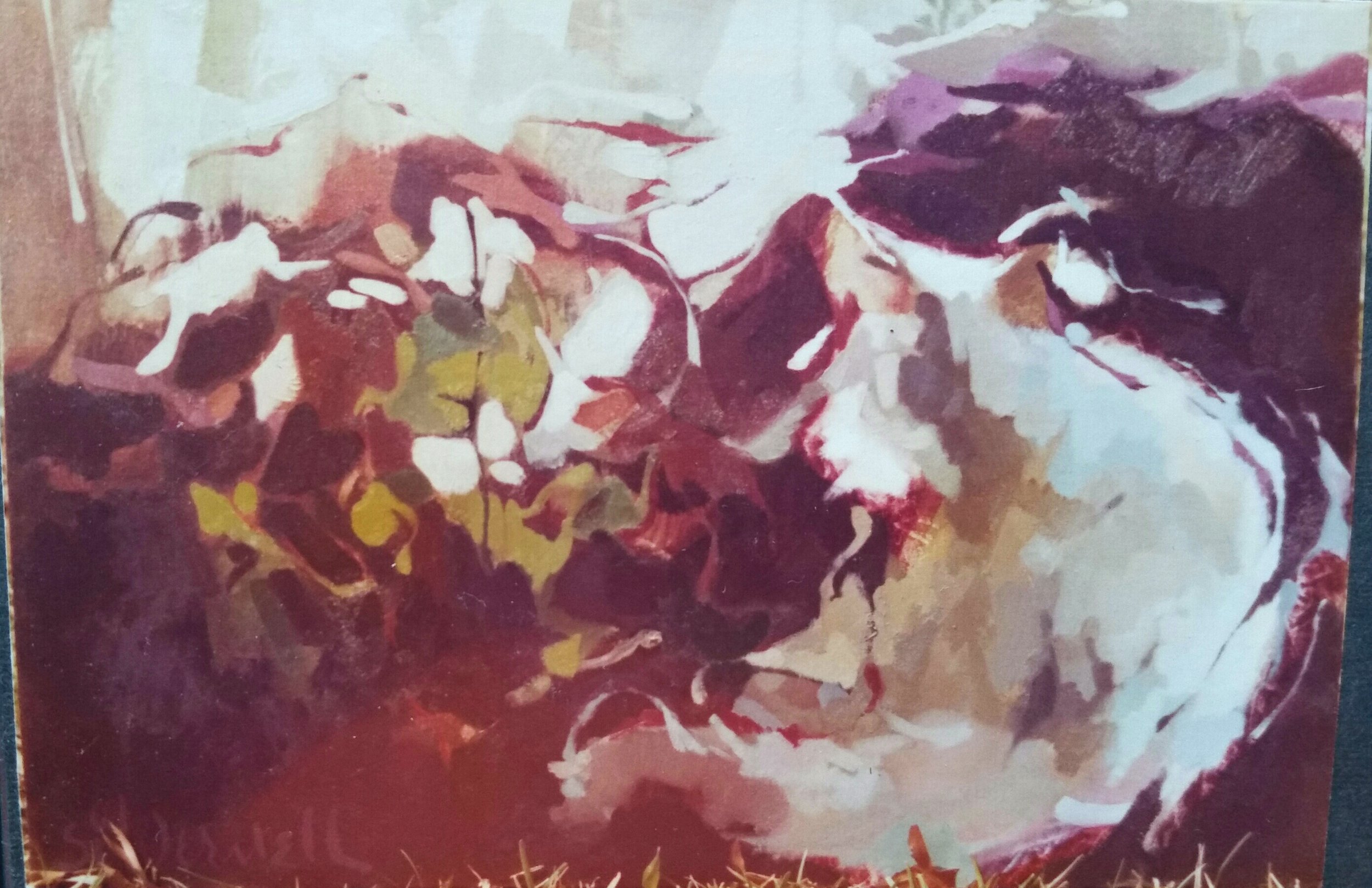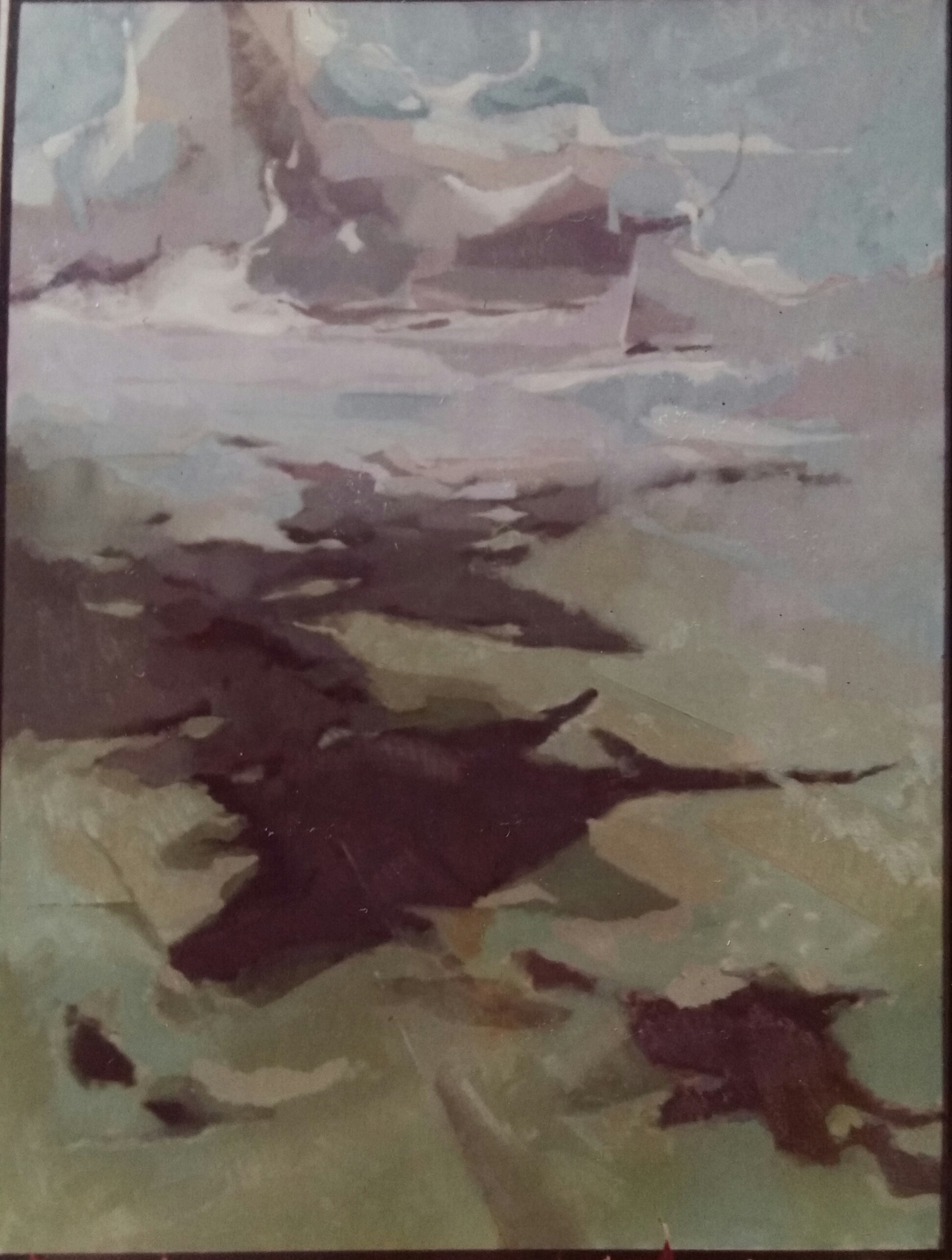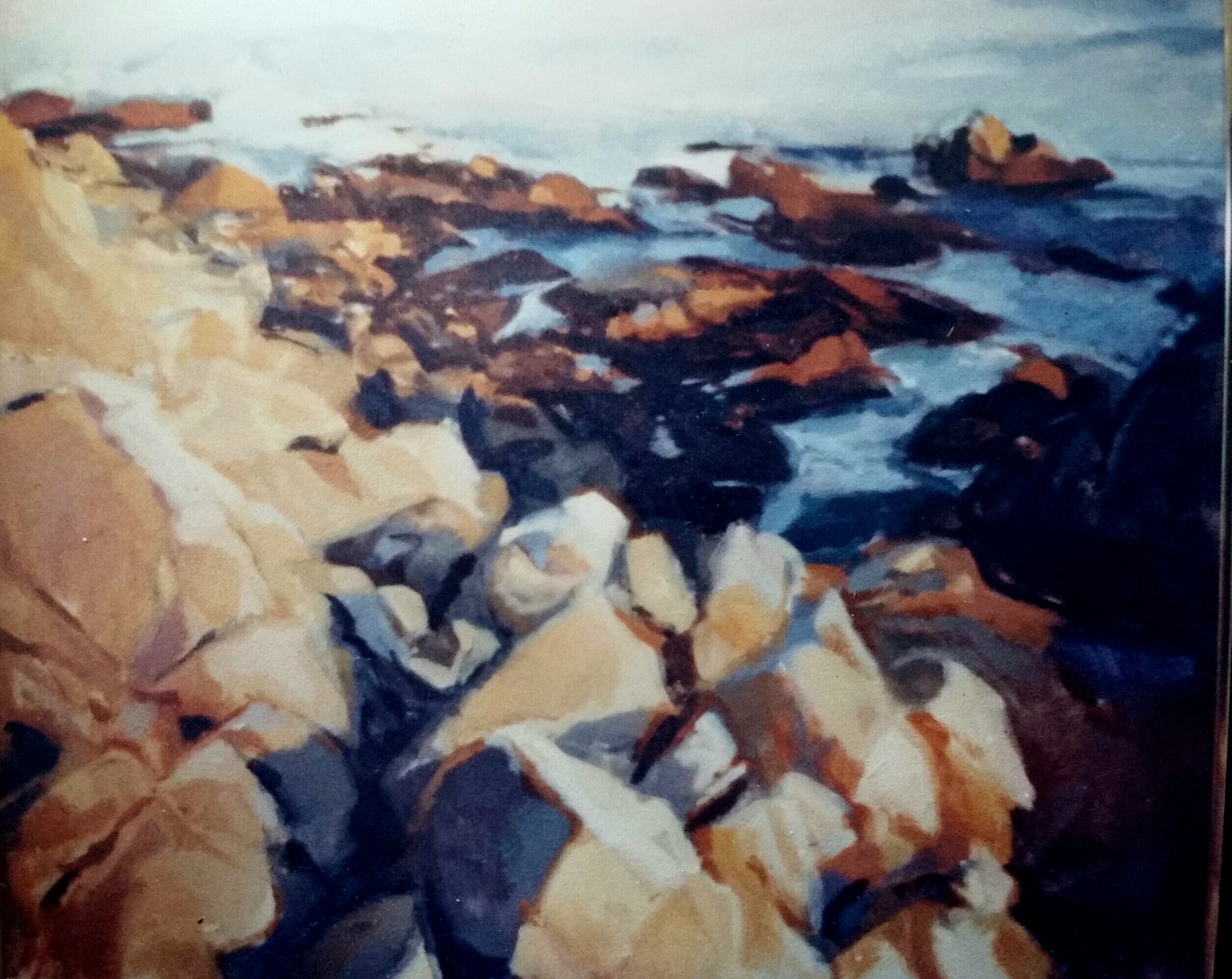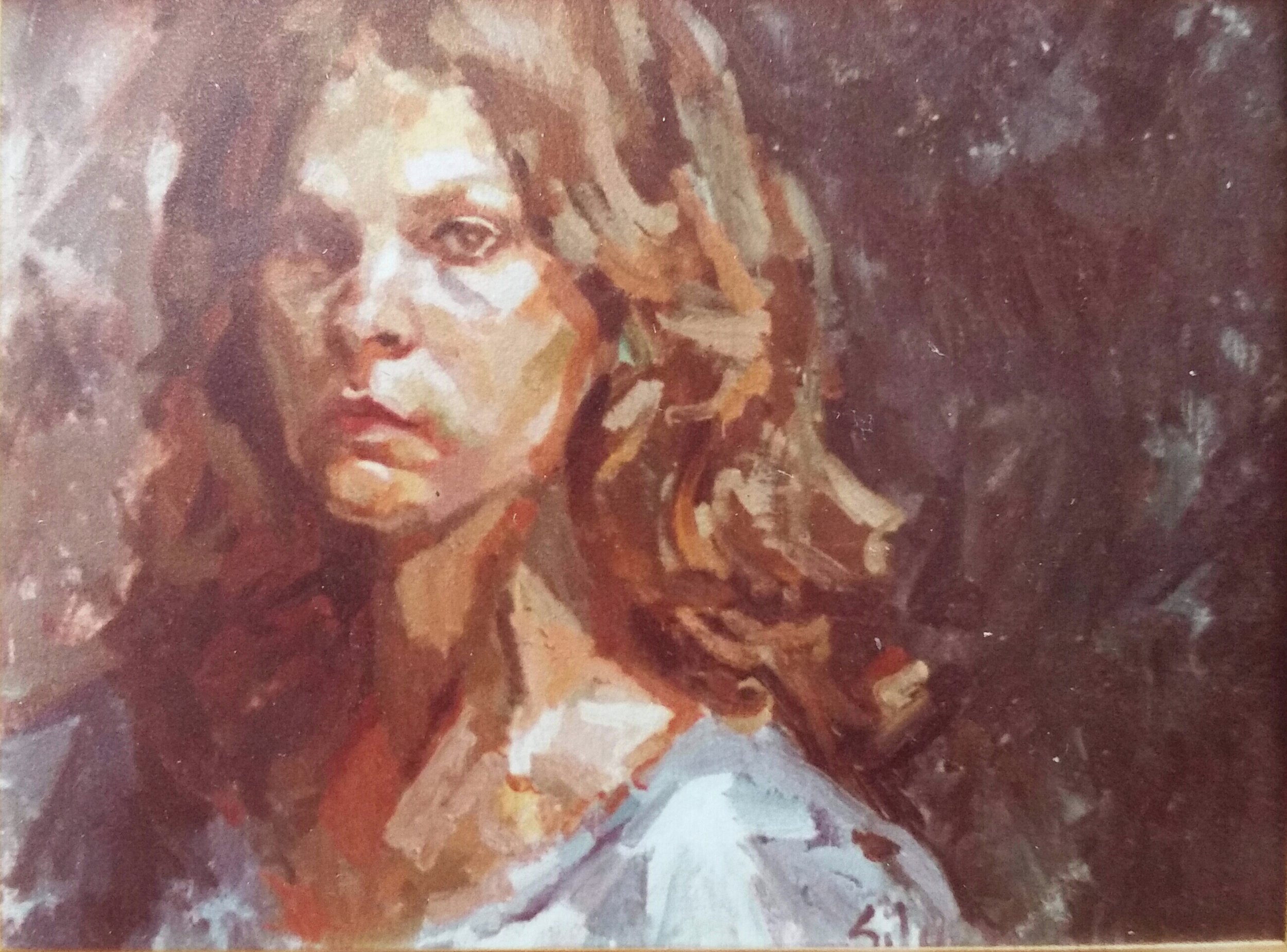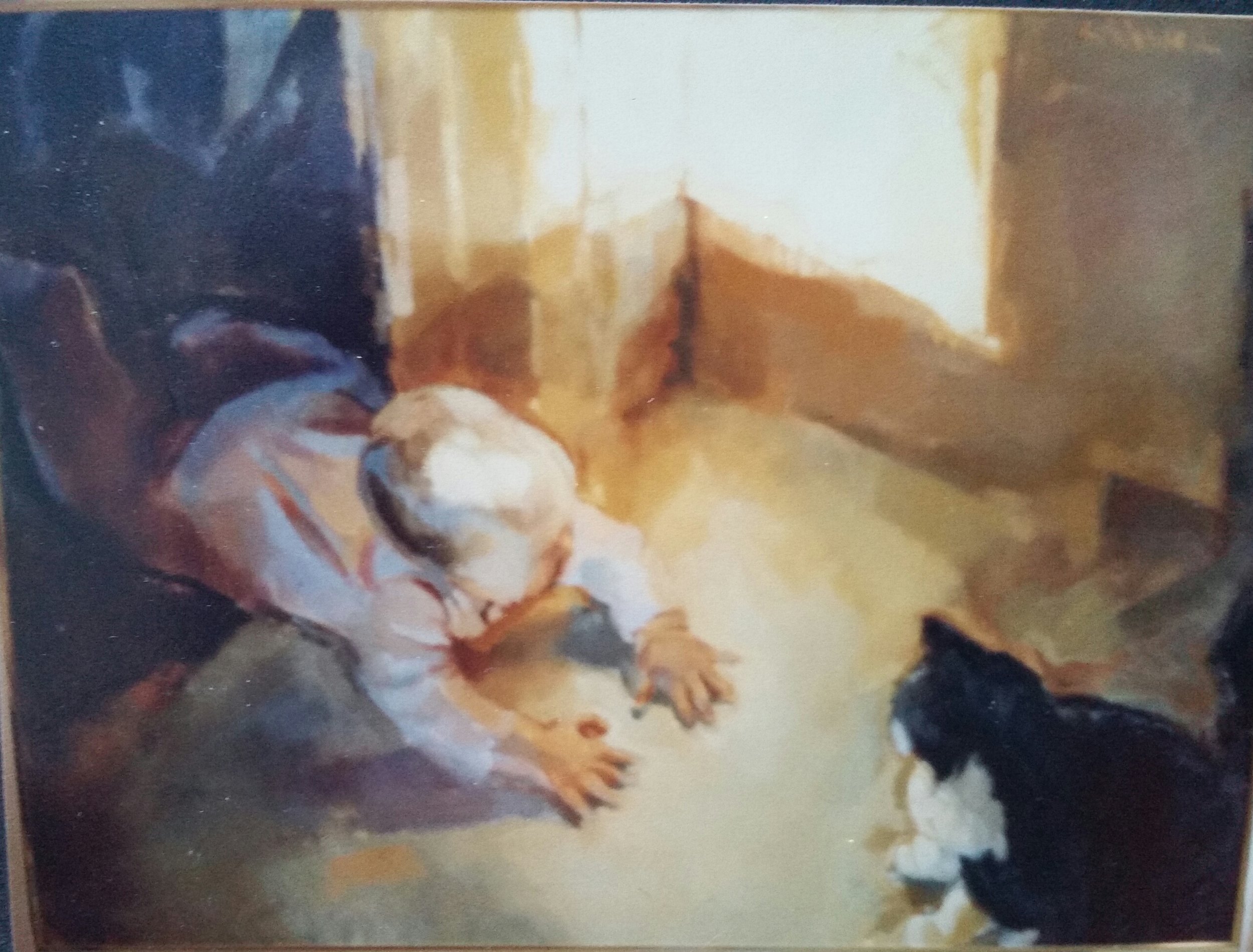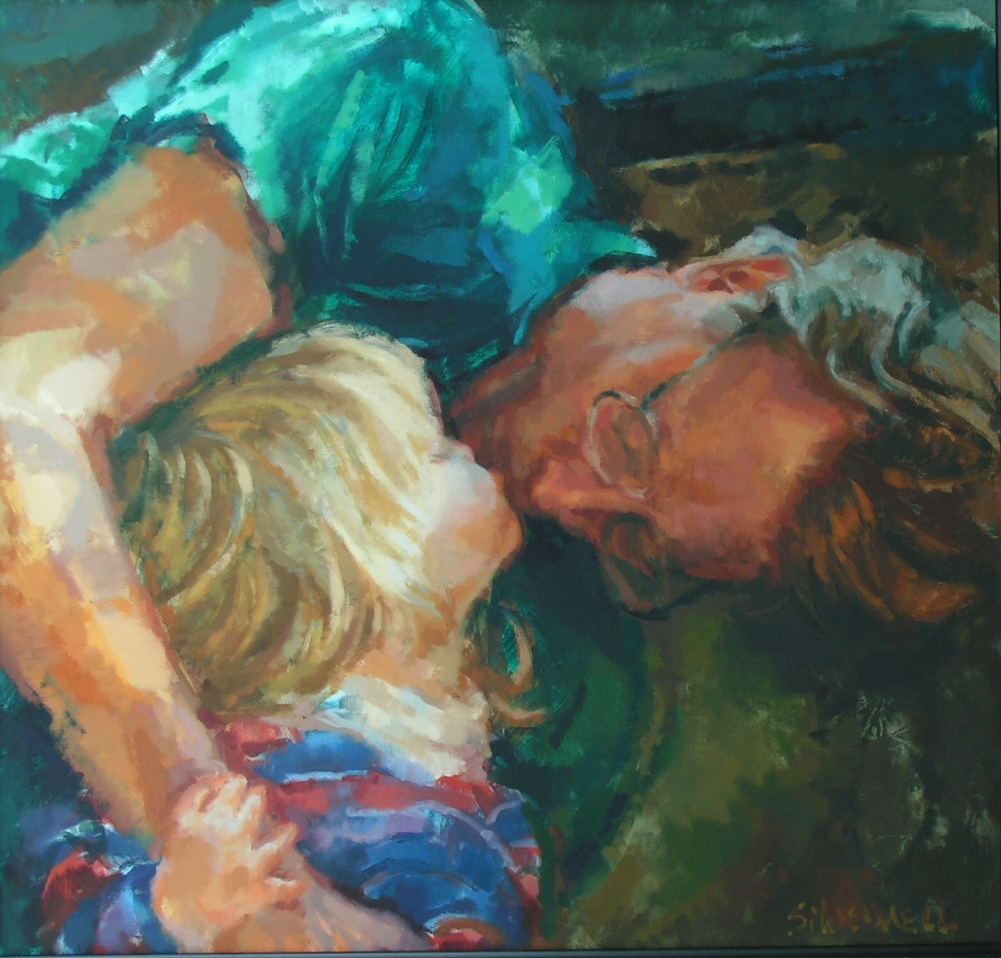A much needed and anticipated retirement from teaching and another move west!
This change in location and lifestyle led to more physical contact with nature but actually caused me to temporarily ignore the studio. But my eye was forever looking at colors of objects mixing virtual colors to recreate, cropping subjects as if they were going to be realized as paintings. I rationalized so that my actual failure to produce canvases was that my studio was smaller, there was lack of storage for new works, no outlet for exhibiting, etc. So my days were spent in the outdoors, hiking, camping and volunteering for environment organizations. I kept in contact with art, sketching while travelling, drawing flora during the seasonal changes, and even mundane objects.
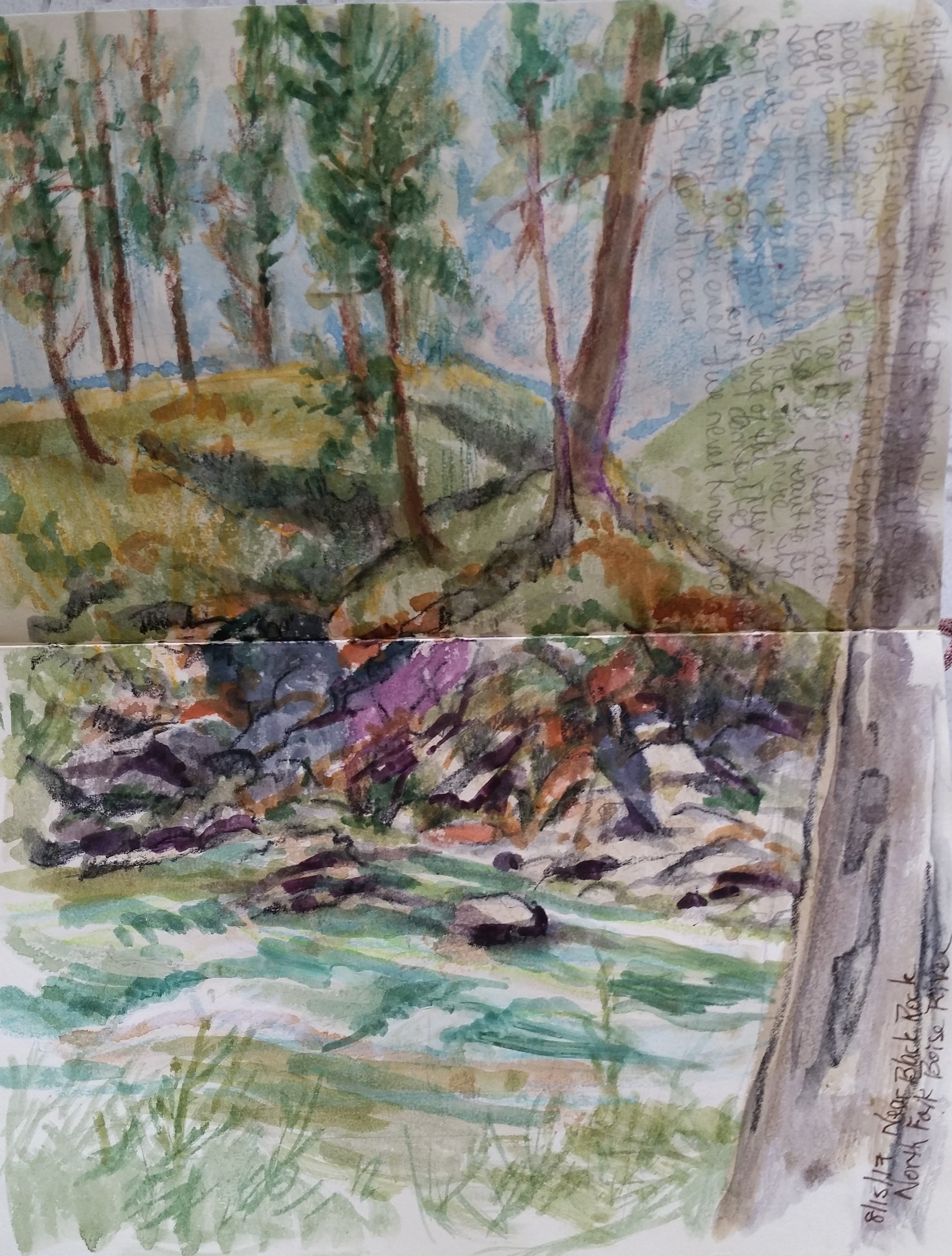

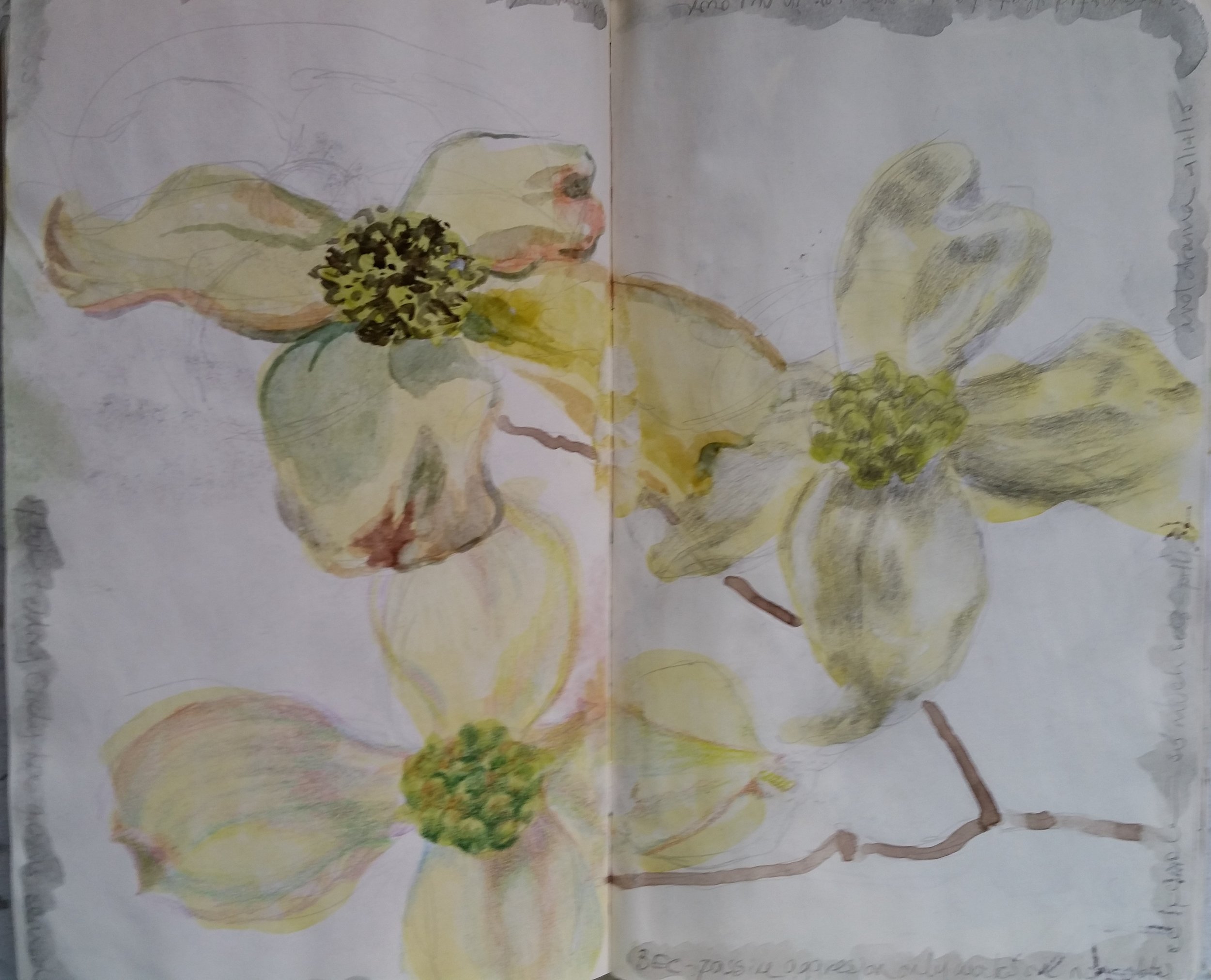
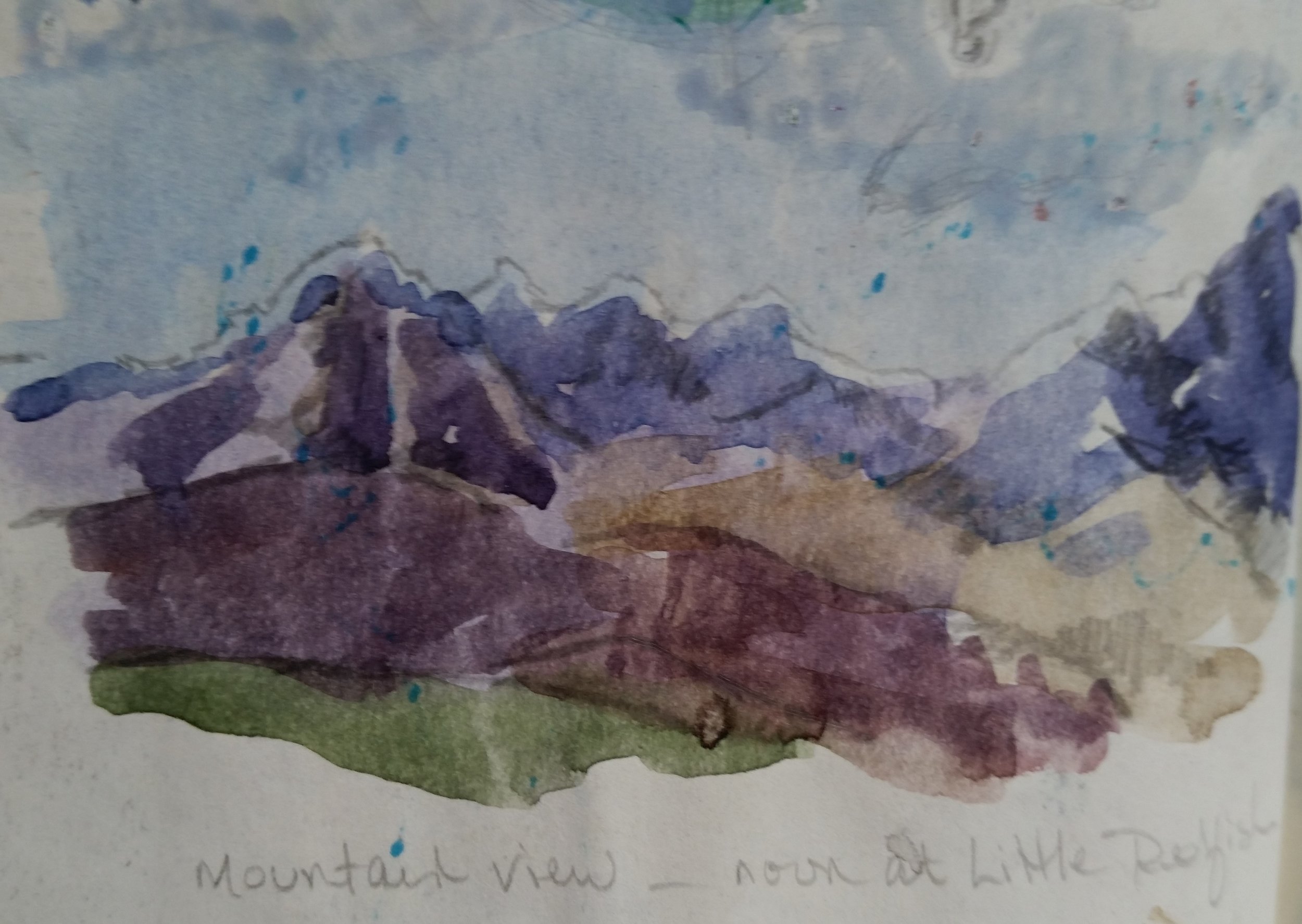
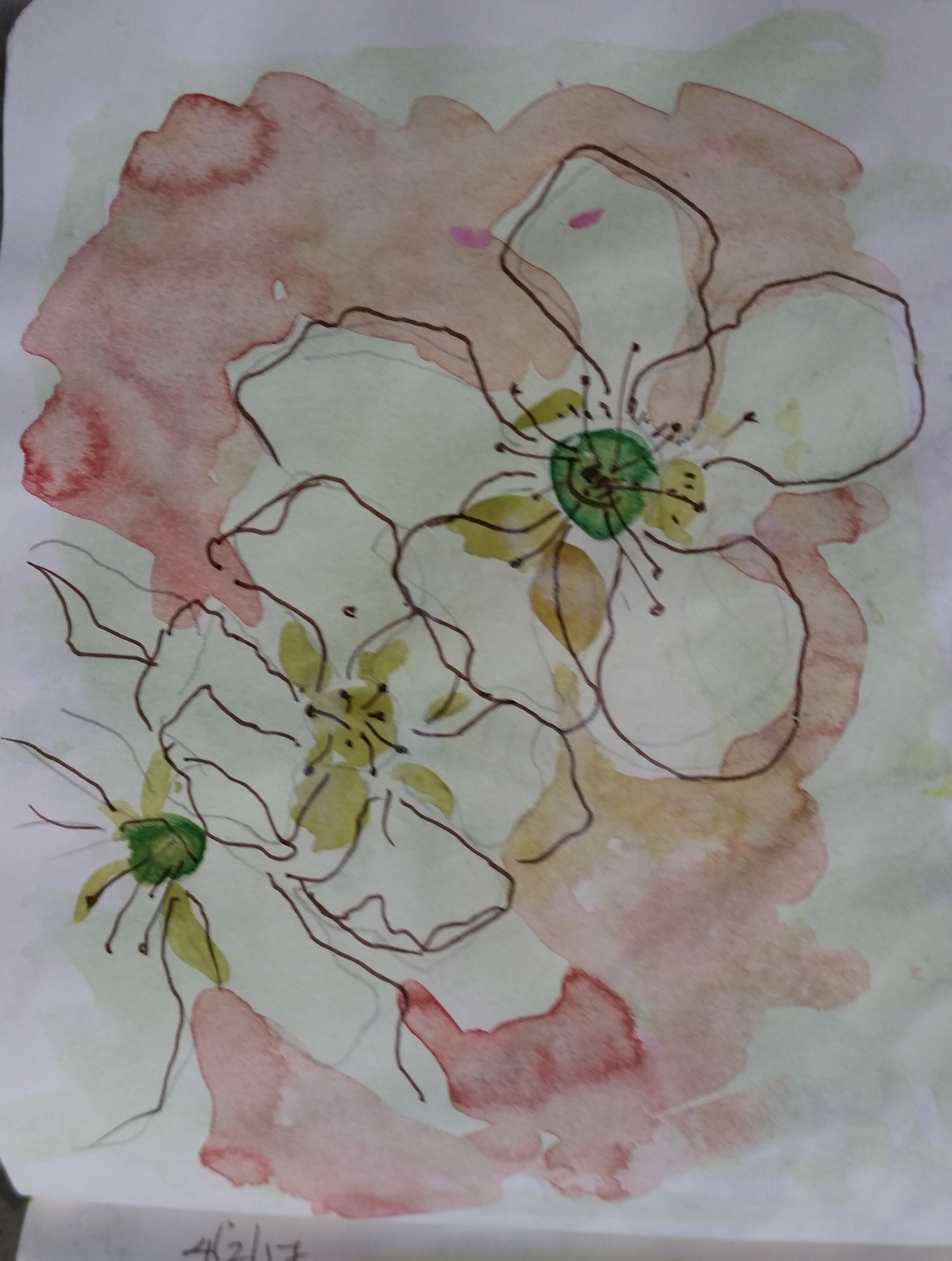
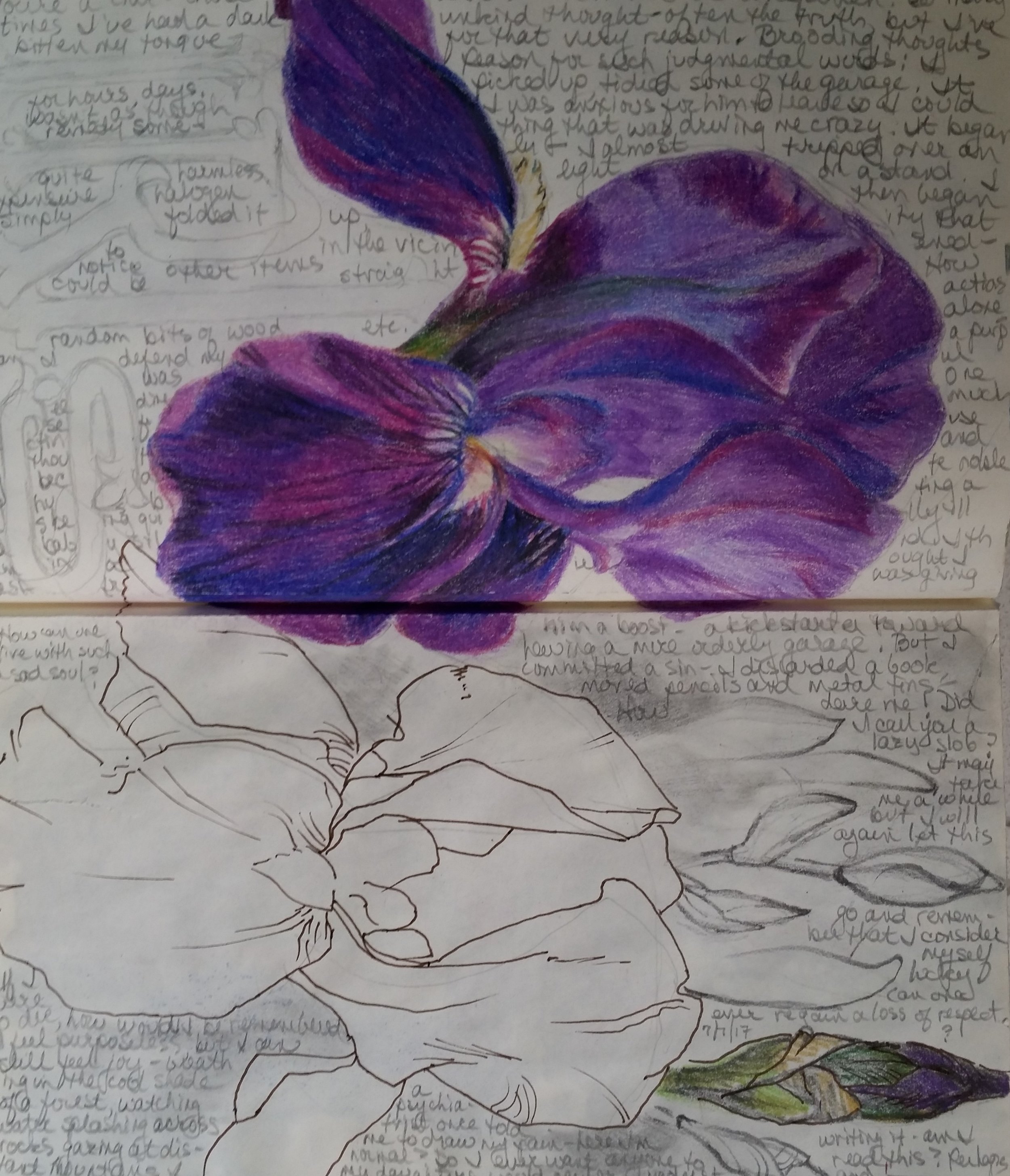
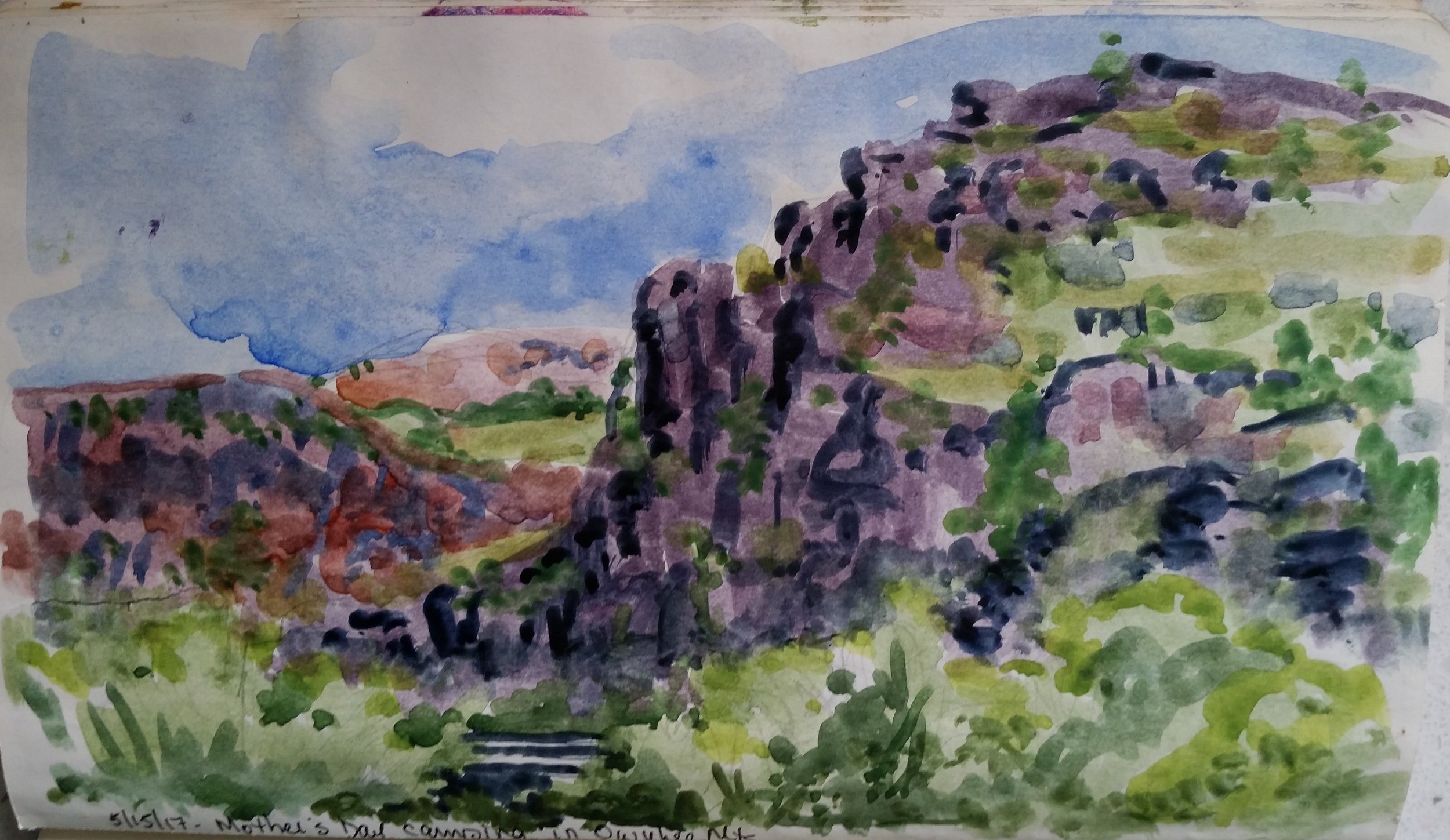
New friends asked what I do, with my answer, "I'm an artist"- always feeling somewhat dishonest. Family asked if I was painting, and since I was completing watercolor sketches, I would answer, "Yes!" But I knew something was missing in my life. So- I decided to begin painting with oil on canvas once again. With every adventure or camping trip I felt inspired and in awe of nature, so the landscape of Idaho provided me with my new subject matter. My first experience back in the studio was almost magical, losing track of time, lost in my own choices and experience of applying paint- creating something new.
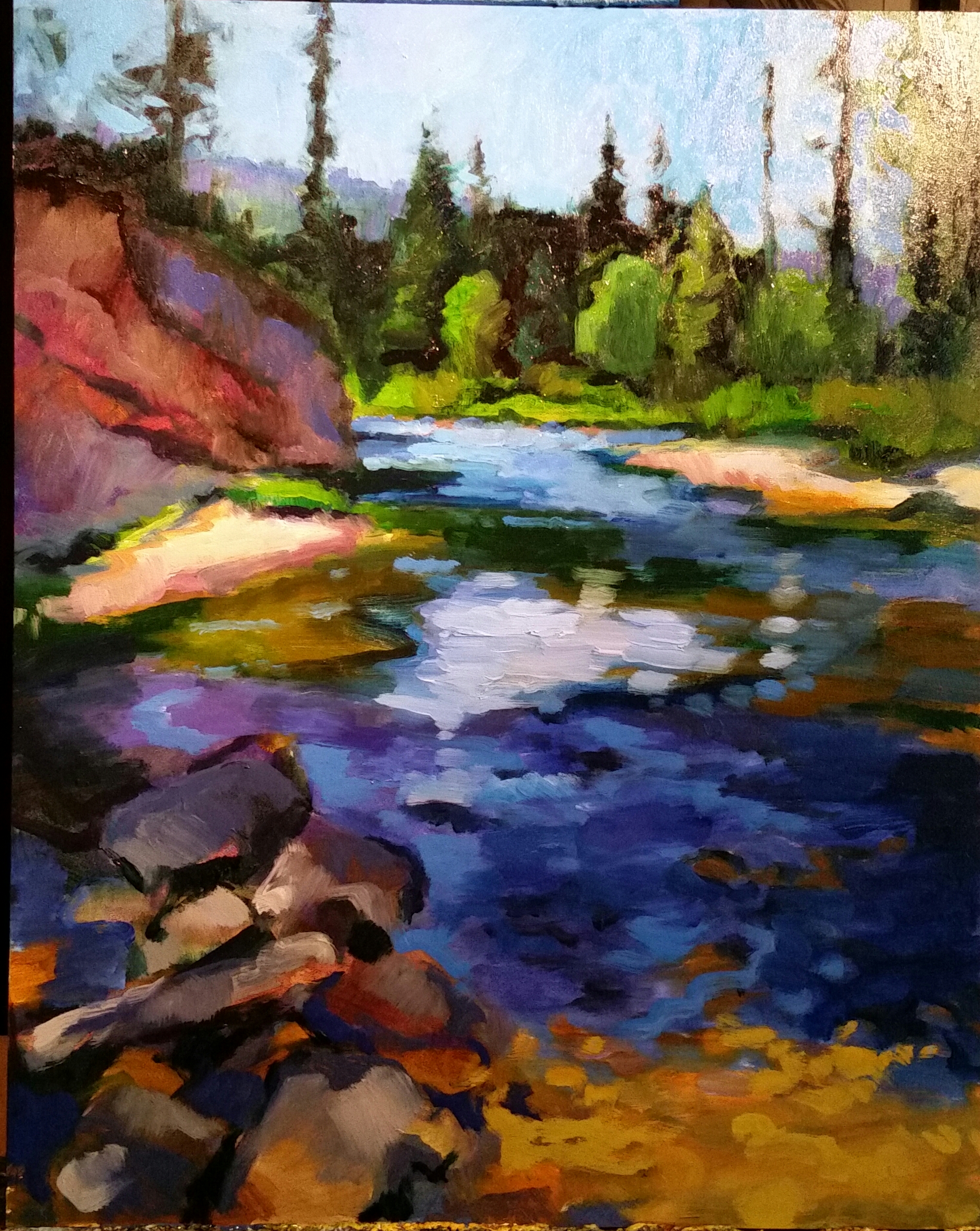
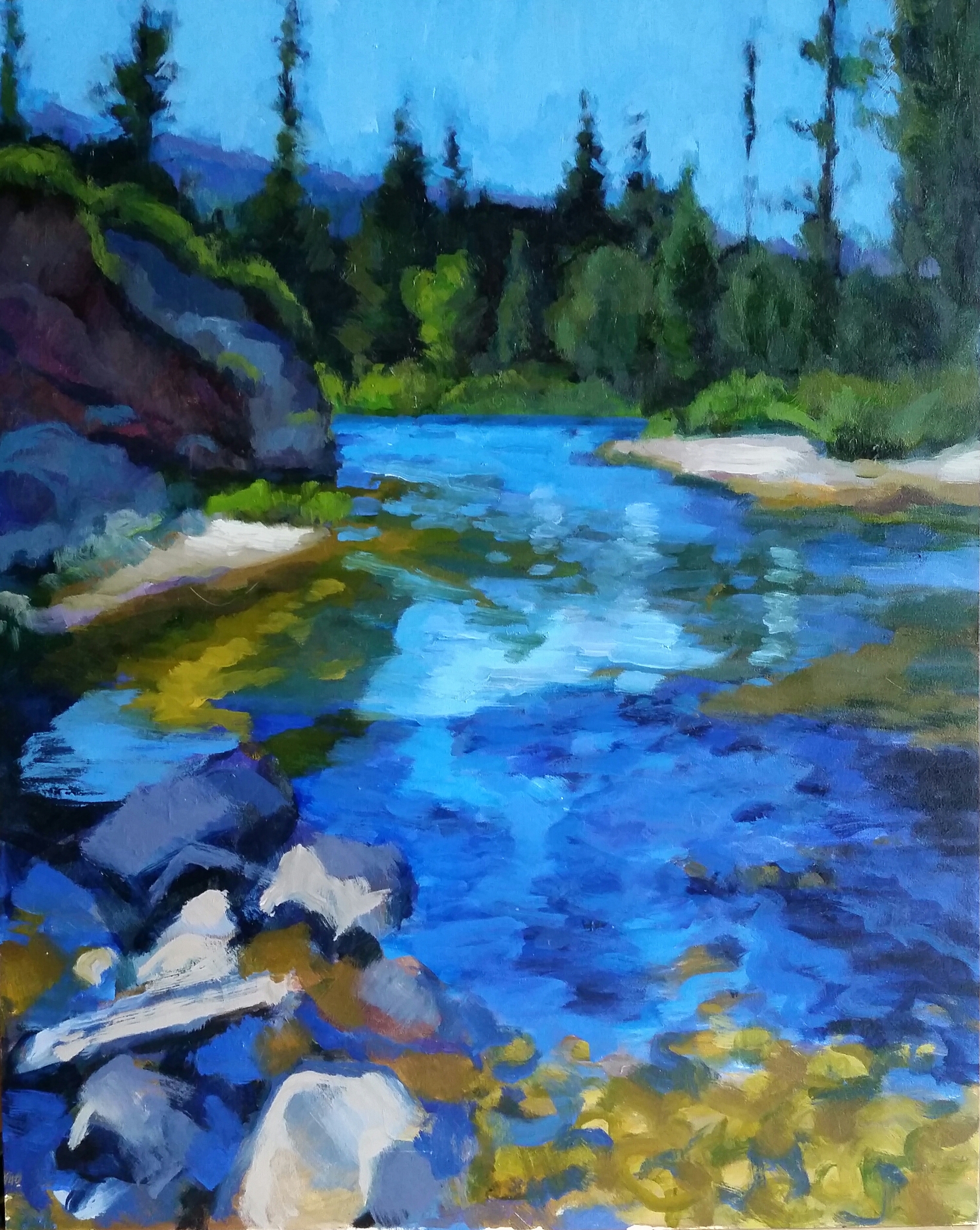
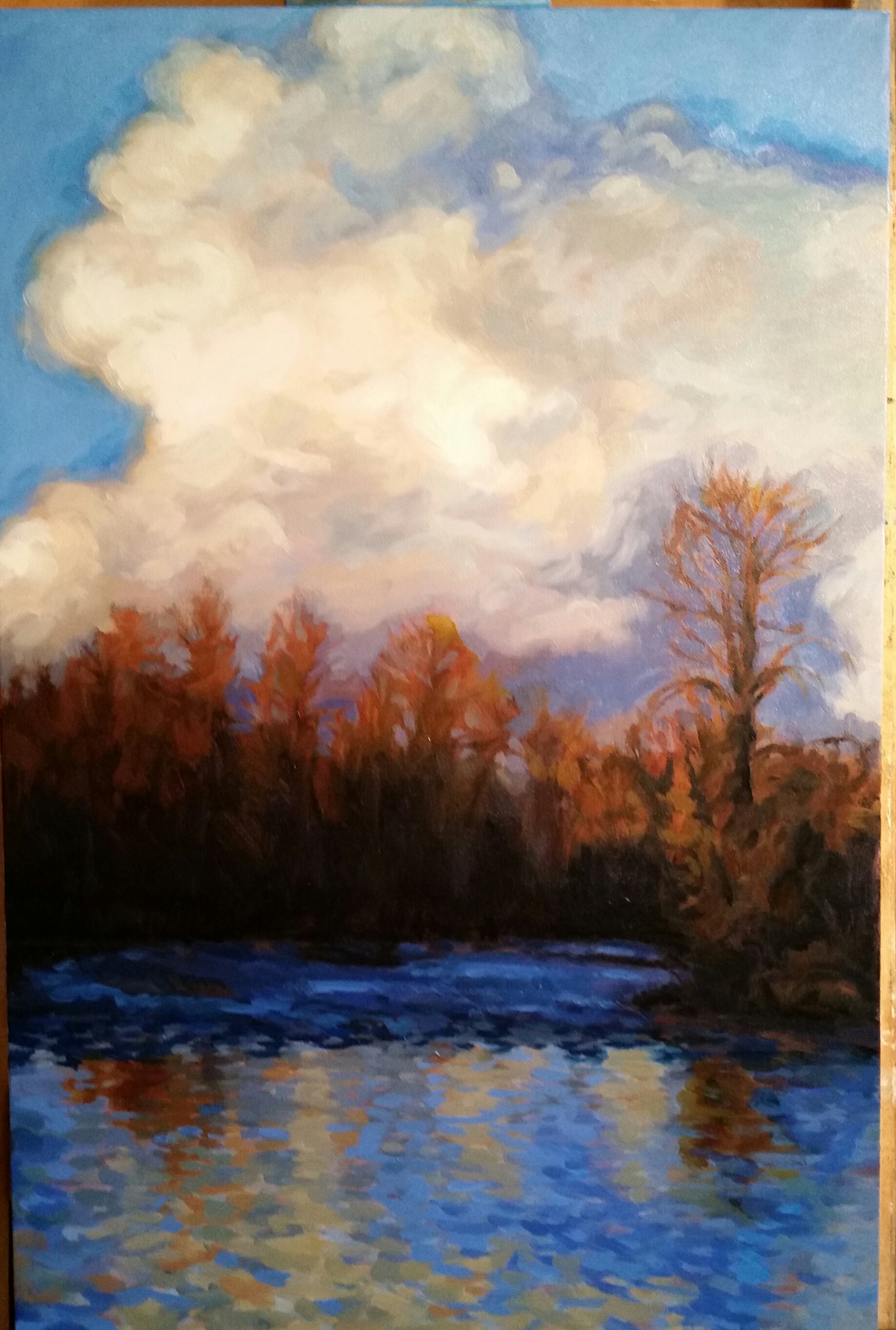
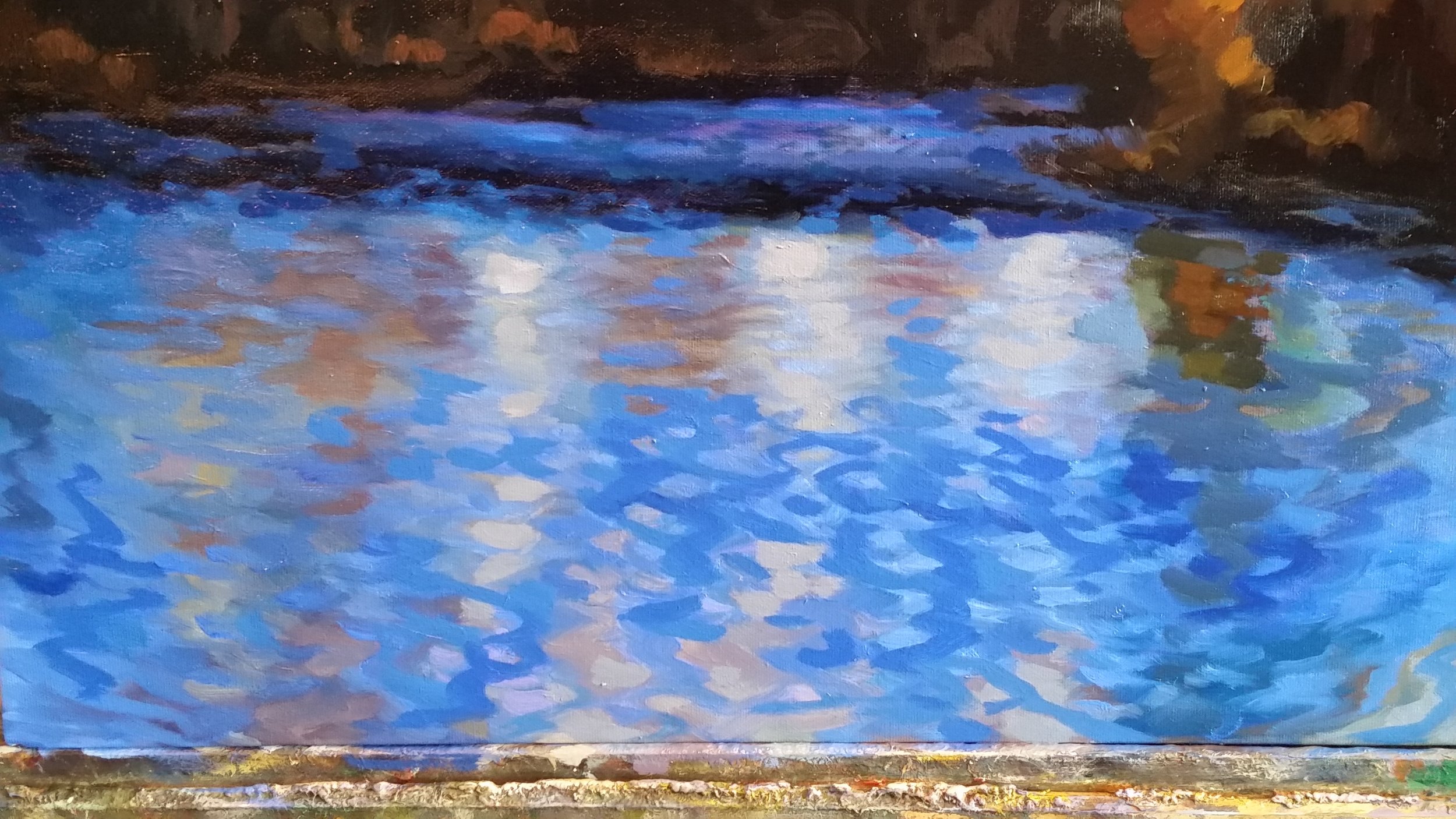
My first paintings were completed using a variety of sketches and photos. I became enamored of the process, beginning with a dark outline and working into wet paint- and couldn't determine when to stop painting. As a result, I felt the images were overworked and tight- I had to relearn to slow the process and contemplate each brushwork. As a result, I never finished my first attempts. Some sketches remained just that.
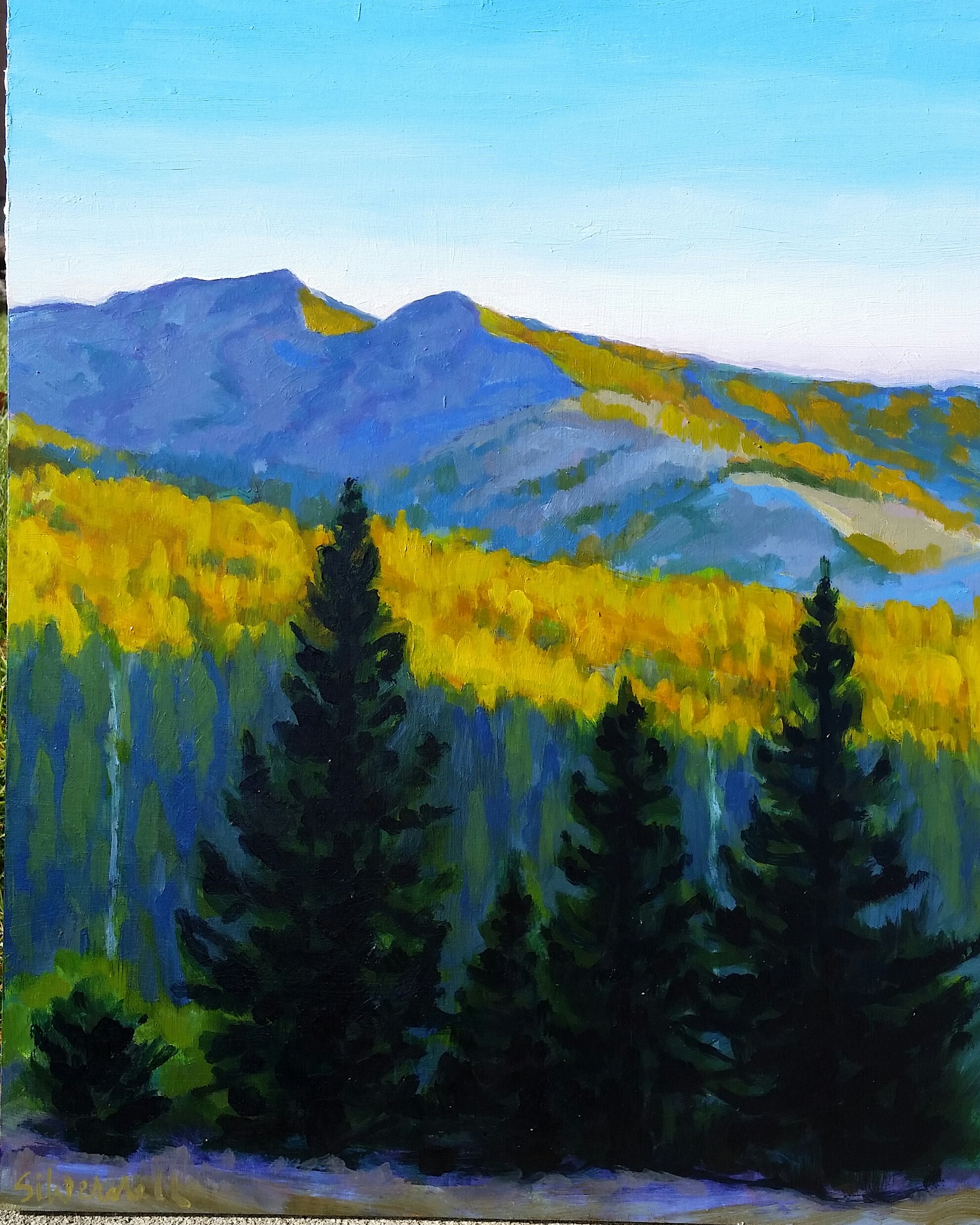
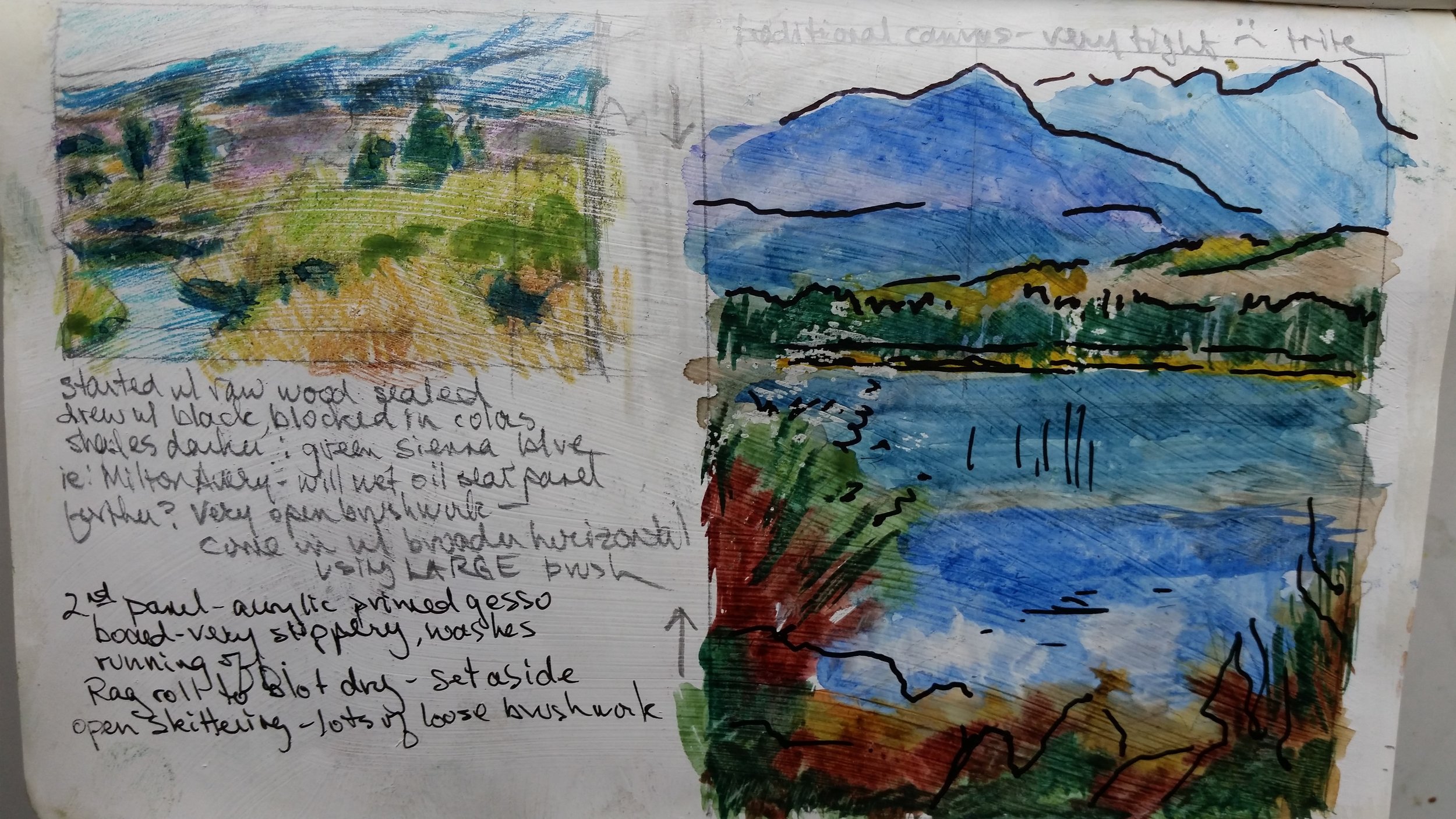
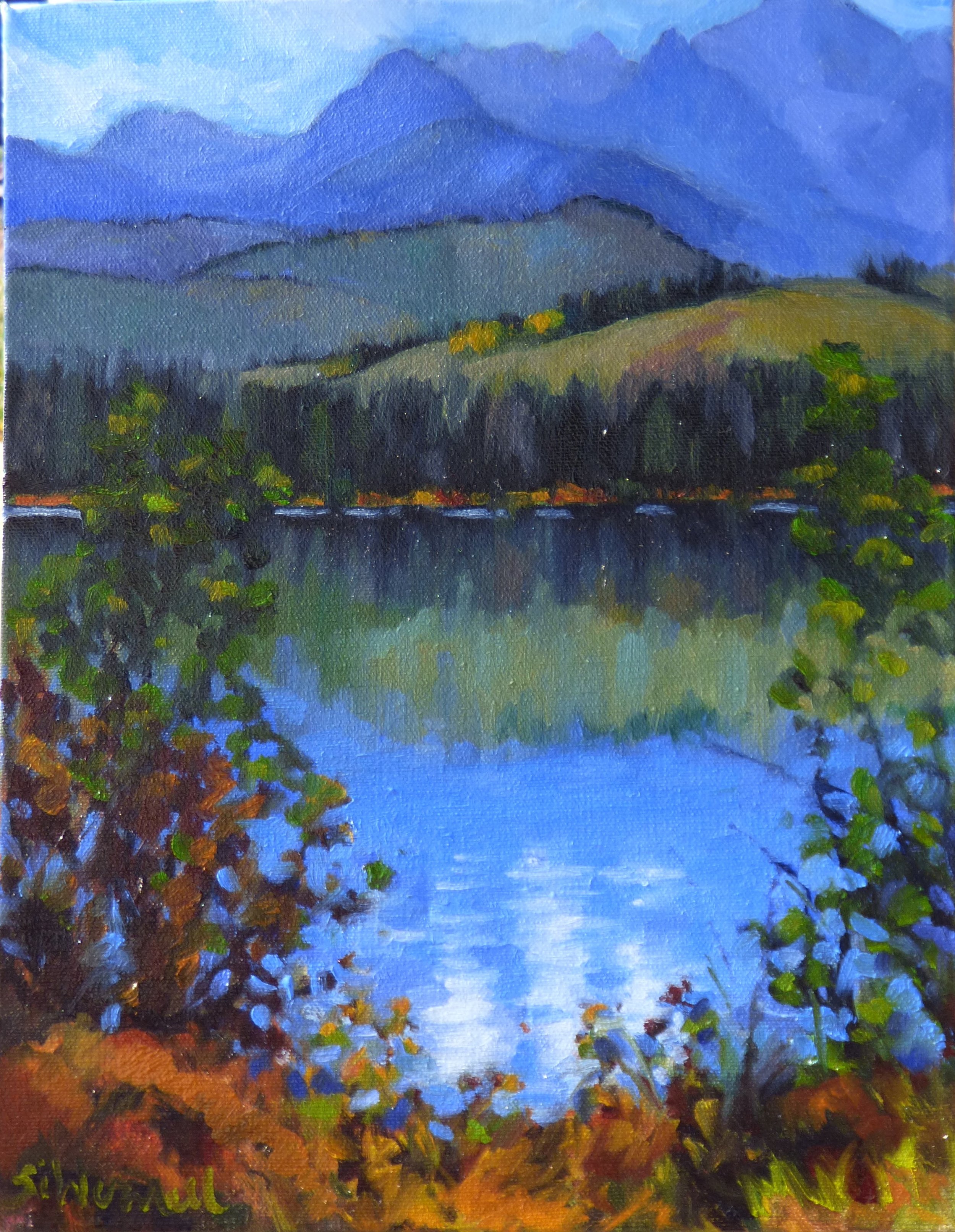
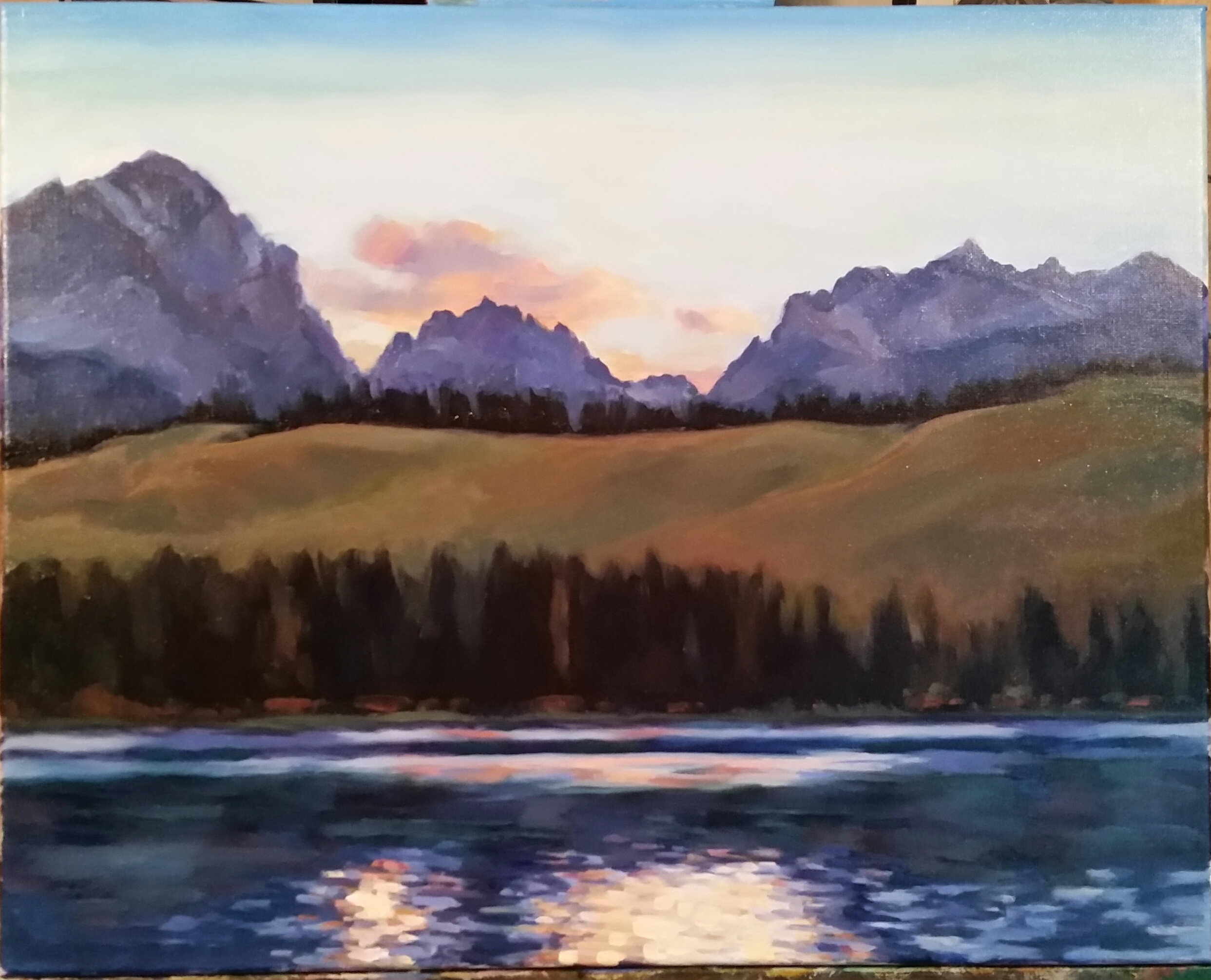
My next few paintings continued with some successes, but even with reflective writing I wasn't realizing the feeling I had for the subjects.
I began wondering if the planning had assumed too much importance to the detriment of the actual artwork. So I went back to a more fluid style, beginning with washes of pigment- less preparation, more push and pull in the art increasing spontaneity.

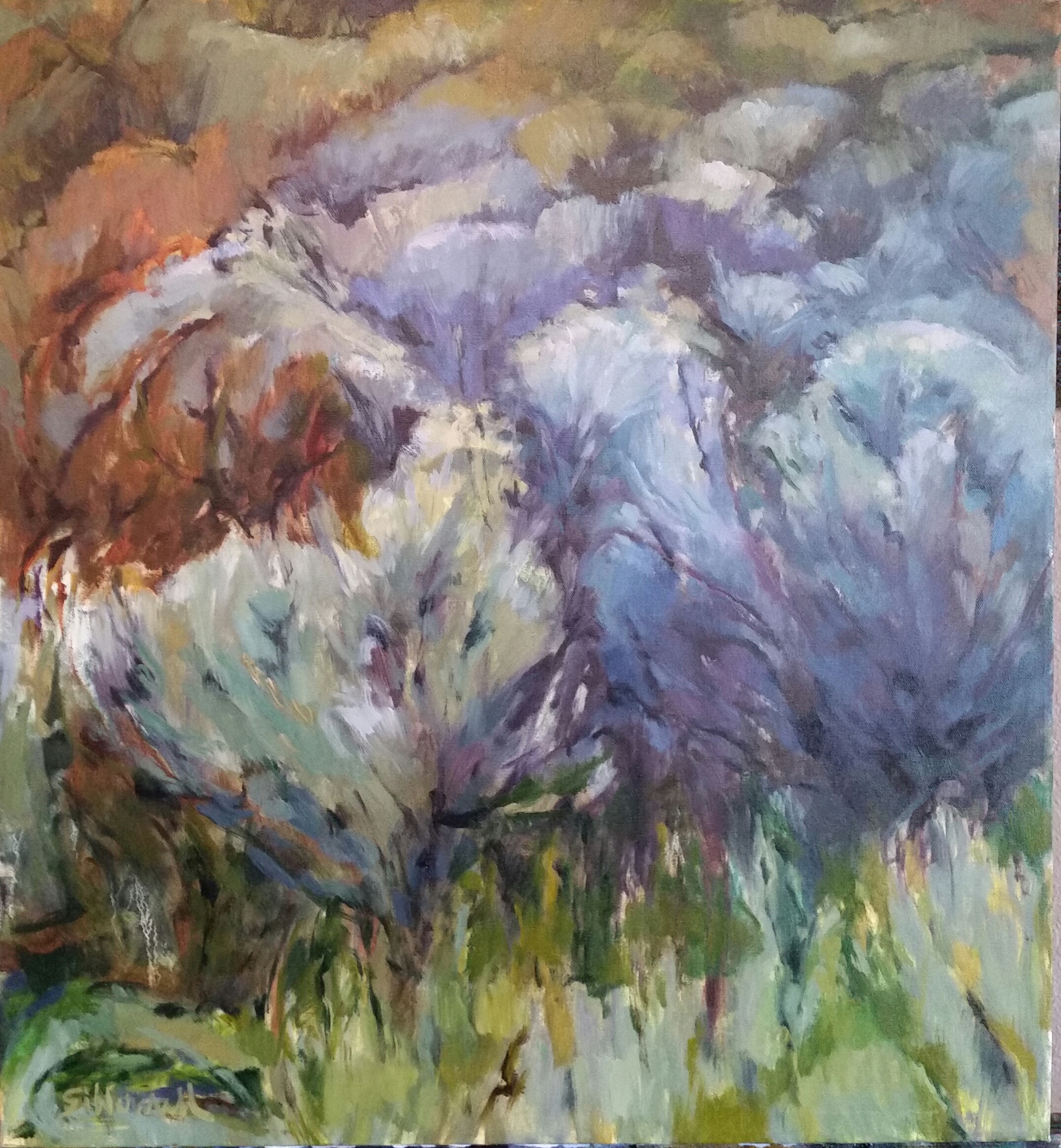
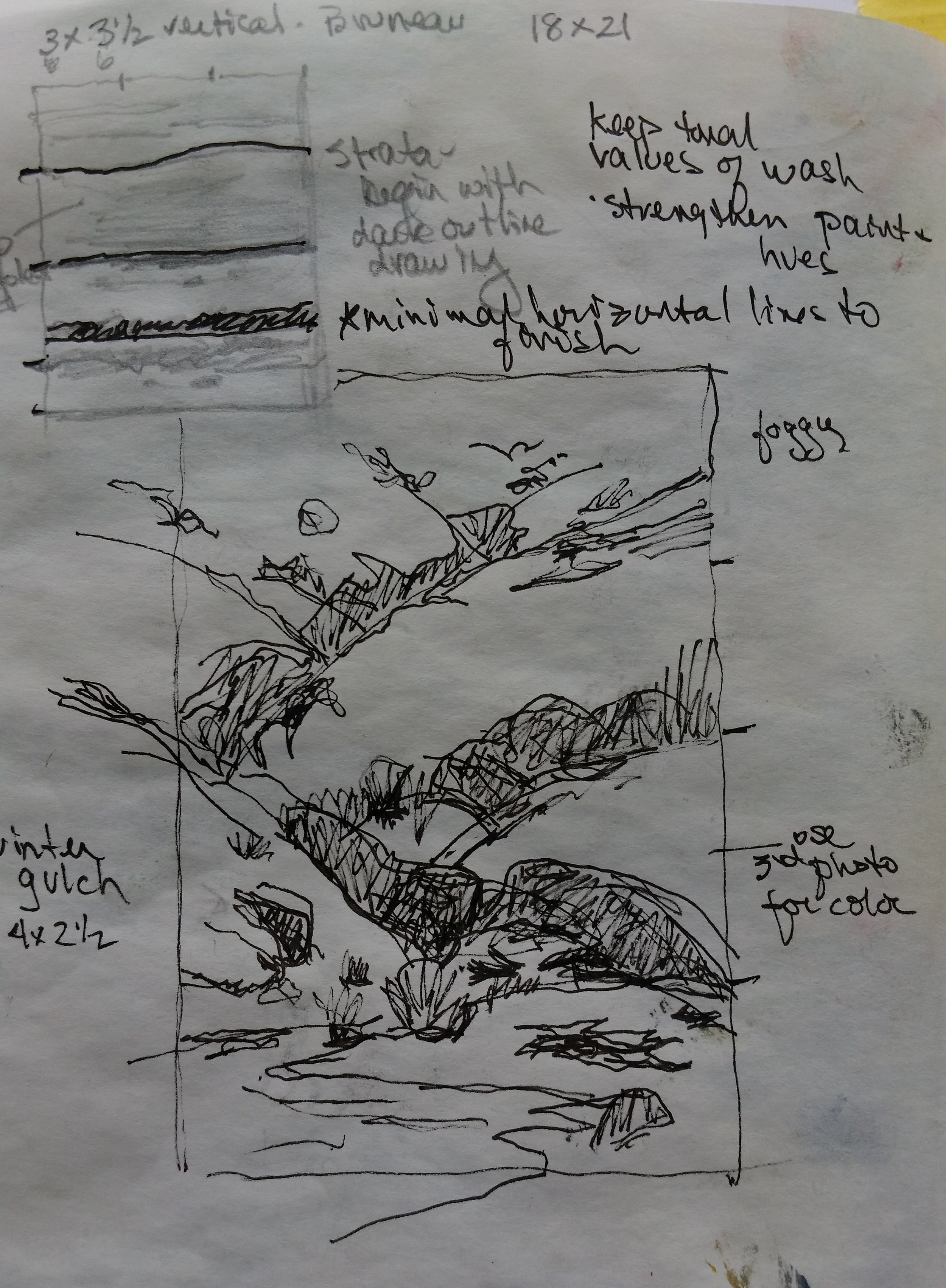
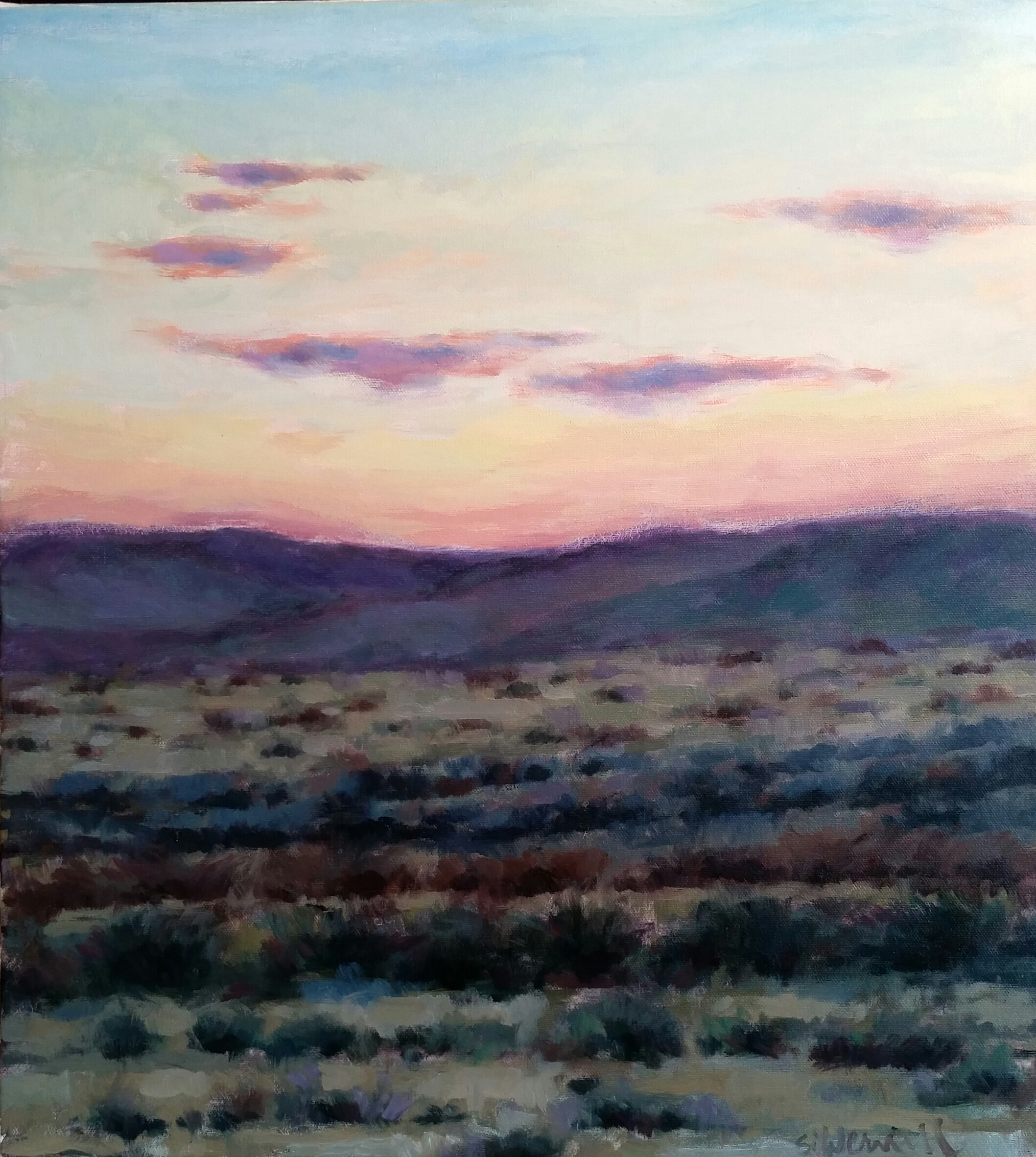
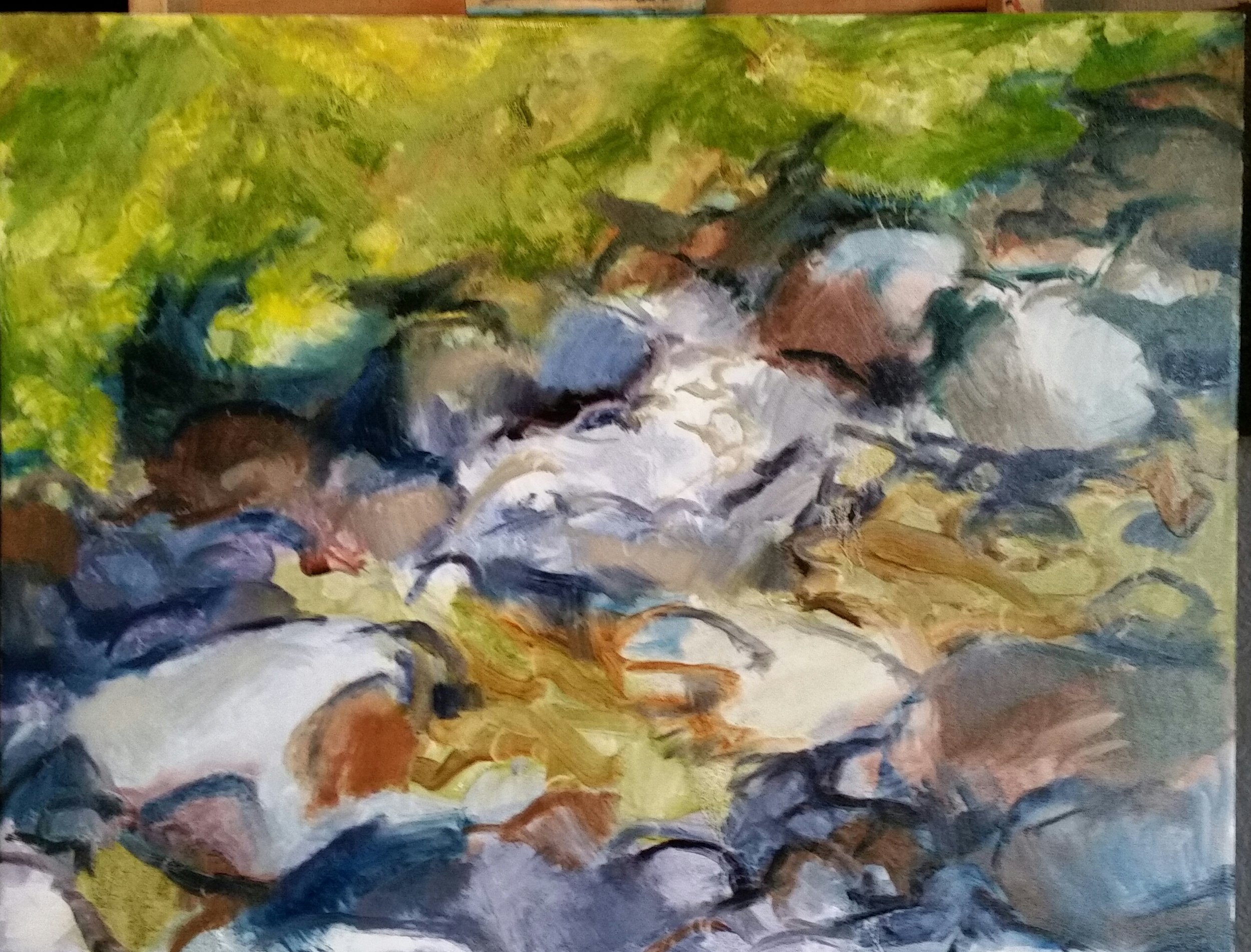
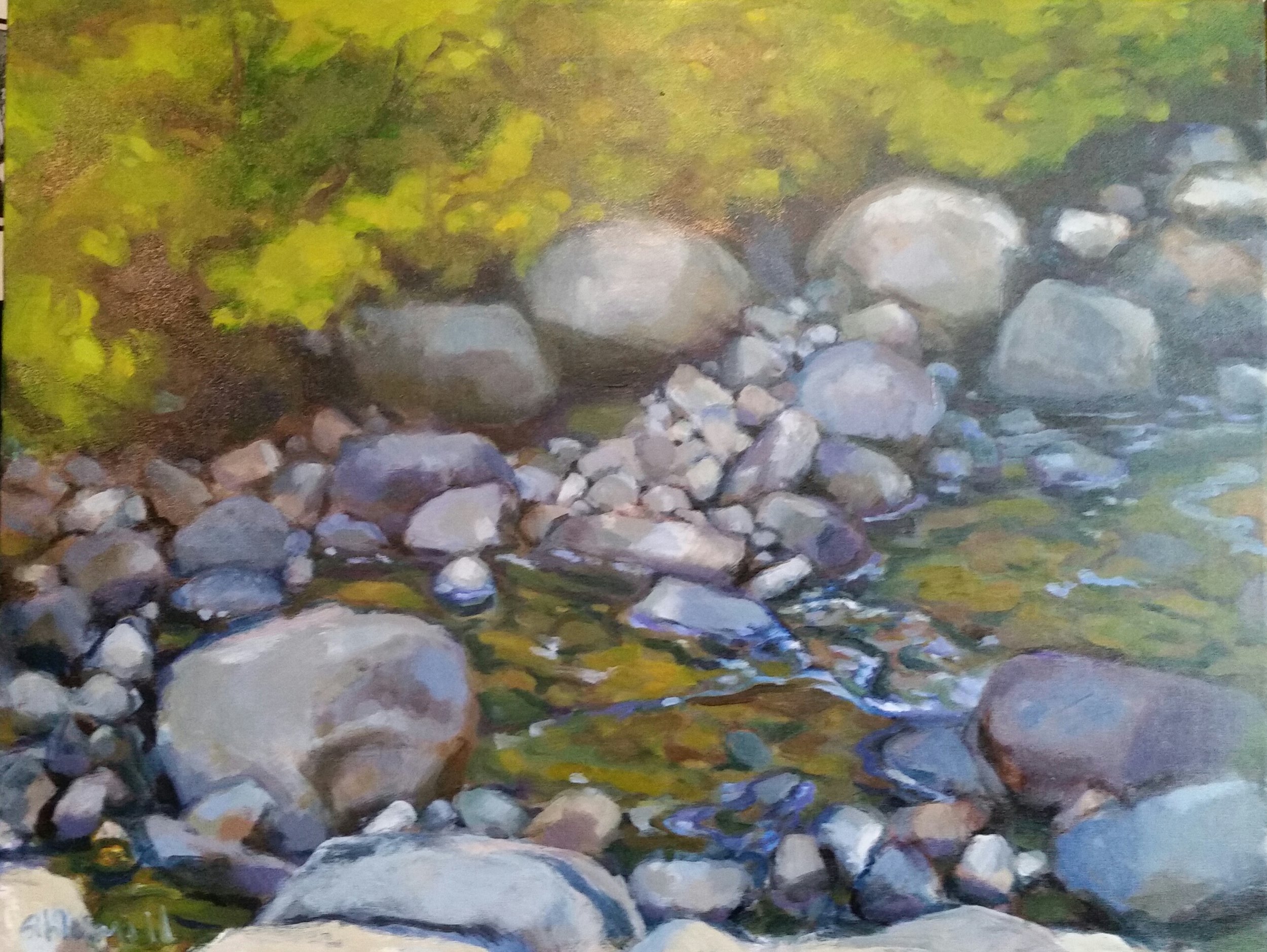
After only a few paintings, I realized I missed the structure, the planning and I became more determined to make the preliminary drawing on the canvas more important regarding each brushstroke on subsequent layers as final ones.
